Market Updates – Issue 1, 2018
By gofb-adm on Thursday, April 26th, 2018 in Issue 1 - 2018, Market Briefs No Comments

By gofb-adm on Thursday, April 26th, 2018 in Issue 1 - 2018, Market Briefs No Comments
Summary
Envoy: China will not ban Malaysian palm oil

China will not impose a ban on Malaysian palm oil and palm-based products, said H.E. Bai Tian, who is China’s Ambassador to Malaysia.
Instead, China will import more primary products such as palm oil and rubber-based products from Malaysia in the future.
“We will not set any limit on the import of Malaysian palm oil and related products. There will be no glass ceiling for the imports,” he said after paying a courtesy call on Plantation Industries and Commodities Minister Datuk Seri Mah Siew Keong in Putrajaya.
Malaysia exported palm oil and palm-based products worth RM8.5 billion to China from January to November 2017, compared to RM7.8 billion over the same period in 2016 – this reflects an increase of 9.8%.
Bai said China would encourage more of its business community to invest in primary industries, especially biomass, in Malaysia.
On China’s biodiesel market, he said diesel and biodiesel B5 consumption in 2016 stood at about 165 million tonnes and 8.3 million tonnes, respectively, while its biodiesel production in 2015 was 300,000 tonnes.
“This means, we need to import 8 million tonnes of biodiesel. I think this is good news for palm biodiesel producers. We hope Malaysia will take up this golden opportunity,” he said.
Meanwhile, Mah said China is the second-biggest buyer of Malaysian palm oil and palm-based products after the EU for its biofuel needs.
“China has overtaken India to become the Number Two export destination for Malaysian palm oil and palm-based products. We expect China to become the biggest importer of our commodity in two years’ time,” he said.
Mah further said the Ministry, through the Malaysian Palm Oil Board, is conducting a study with China’s Tsinghua University on biodiesel B5.
To counter the EU’s intended palm oil ban in biofuels, Mah said Malaysia is pursuing the growth potential in markets like Iran, Vietnam, the Philippines, Japan and the Middle East.
On rubber and rubber products, Mah said China has overtaken the US and the EU to become Malaysia’s top export destination.
He said Malaysia exported rubber and rubber products worth RM7.5 billion to China from January to November 2017, an increase of 76% compared to RM4.2 billion over the same period in 2016.
Source: Bernama, Feb 3, 2018
Another stiff hike in India’s import duty on palm oil

India has raised import tax on crude and refined palm oil to the highest level in more than a decade, the government said in a statement, as the world’s biggest edible oil importer tried to support local farmers.
The duty increase would lift oilseed prices and encourage domestic supply for crushing, helping to cap edible oil imports in the 2017/18 marketing year that started on Nov 1, dealers said.
India raised import tax on crude palm oil to 44% from 30% and on refined palm oil to 54% from 40%, a government order said.
India relies on imports for 70% of its edible oil consumption, up from 44% in 2001/02.
The fourth increase in import tax in less than six months would push up domestic edible oil prices and support prices of local oilseeds like soybean and rapeseed, said BV Mehta, executive director of the Solvent Extractors’ Association, a Mumbai-based trade body.
“Supplies from the new season rapeseed crop have just started. Now farmers will get remunerative prices due to the duty hike,” Mehta said.
India primarily imports palm oil from Indonesia and Malaysia and soybean oil from Argentina and Brazil. It also buys small volumes of sunflower oil from Ukraine and canola oil from Canada.
The duty hike will narrow the difference between palm oil and soft oils like soybean oil and sunflower oil, making it lucrative for refiners to increase purchases of soybean oil and sunflower oil in the coming months, said a Mumbai-based dealer with a global trading firm.
“Palm oil’s share is likely to fall substantially unless India raises import tax on soybean oil and sunflower oil,” the dealer said.
Source: Reuters, March 2, 2018
Traceability required for sale of CPO futures in Malaysia
Sellers of crude palm oil futures who want to be involved in physical deliveries must now provide traceability details up to the palm oil mill’s location, according to a document posted on the Bursa Malaysia Derivatives website.
Crude palm oil sellers should submit traceability documents to port tank installations approved by Bursa Malaysia Derivatives.
The traceability document requires the name of the parent company, mill address and coordinates, and quantity of crude palm oil received. The requirement took effect from Feb 26.
Source: Reuters, Feb 26, 2018
Leading analyst predicts higher Malaysian palm oil prices

Malaysian palm oil prices are expected to trade at RM2,500 to RM2,700 per tonne as production falls from March and stock levels decline between January and July.
Leading vegetable oils analyst Dorab Mistry said this would mean a recovery for benchmark palm oil prices that have slumped more than 10% since early November 2017 on rising Malaysian stockpiles. Inventory levels in Malaysia rose to their highest in more than two years in December 2017, hitting 2.7 million tonnes.
“Palm oil looks oversold and demand is at record levels,” Mistry said at an edible oils conference in Karachi, Pakistan.
“We must expect measures from the Malaysian government to assist small growers and to support prices. Stocks have peaked and will gradually decline from now until July.”
Mistry said his price outlook is based on an assumption of Brent crude oil prices at US$60-75 a barrel.
Palm oil production typically rises during the fourth quarter of each year before declining through the middle of the following year. Analysts, however, expect to see slower seasonal tapering this year, as output trends have been affected by the El Nino event of 2015.
Mistry, the director of Indian consumer goods company Godrej International, pegged Malaysia’s 2018 palm oil output at 21 million tonnes, while Indonesia’s was forecast at 38 million tonnes. Together, these countries account for nearly 90% of global palm oil production.
The Malaysian Palm Oil Board reported an output of 19.9 million tonnes last year, while the Indonesia Palm Oil Association estimated its production at 36.5 million tonnes.
“Overall in oil year 2017-2018 [ending September 2018], palm oil production will be up at least 4.5 million tonnes [globally],” said Mistry.
Based on rainfall patterns and weather forecasts, production is expected to surge from September, he said.
The crude palm oil price would rise to US$750 per tonne CIF Rotterdam by mid-year, while the RBD palm olein price would touch US$720 a tonne on a free-on-board basis, he added.
Source: Reuters, Jan 22, 2018
India’s branded edible oils sales cross Rs 1.3 trillion mark

Health-conscious Indians are driving the sale of branded edible oils, ditching ‘loose oil’ sold by neighbourhood grocery stores.
According to market research firm Euromonitor International, the edible oils category in India grew 25.6% to cross the Rs 1.3 trillion mark last year – the first time any packaged food category has done so. Dairy products were second, achieving Rs 1.2 trillion or 16.5% more than in 2016.
Edible oils formed over 30% of the Rs 4.3 trillion packaged foods market in India, compared to the 8.8% share held by rice, pasta and noodles.
“Growth is primarily coming from new consumers who are shifting from loose to packaged oils,” said Atul Chaturvedi, chief executive officer of Adani Wilmar Ltd, which refines and produces edible oils.
Deoki Muchhal, managing director of Cargill’s food business in India, said: “Packaged oil sales are growing at 2.5 times the rate of overall edible oils consumption in India.
“Increasing awareness of safe products, the food law administration restricting loose product sales and the crackdown by the government on unfair trade practices have aided this growth.”
According to Euromonitor, the rice, pasta and noodles category will grow faster than others until 2022 with a 12% cumulative average growth rate, followed by breakfast cereals (10.6%). Edible oils are expected to maintain a healthy rate of 9%.
Source: Business Standard, Feb 7, 2018
India’s cooking oil imports on the rise
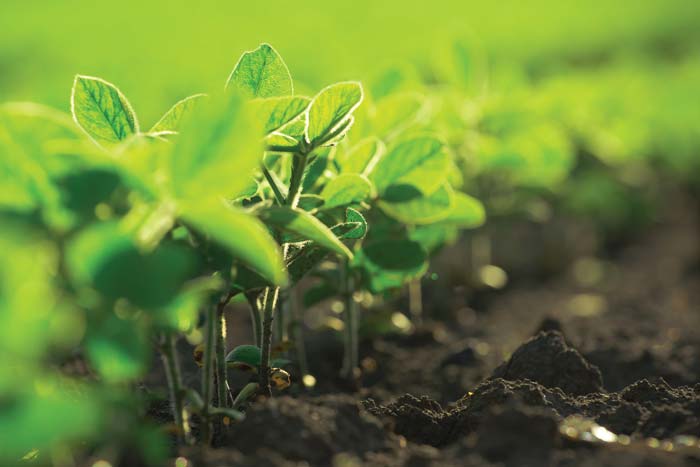
In the wake of unsatisfactory oilseed production in the harvesting year 2017-18, India is expected to import 15 million tonnes of cooking oil. This is likely to push up the annual bill for edible oils imports to about Rs 650 billion.
The latest survey by the Soybean Processors Association estimates that Indian soybean production will register 8.4 million tonnes, or 24% less compared to 10.9 million tonnes previously. Soybean contributes nearly a third of domestic oilseeds output.
India is the world’s largest importer of edible oils, buying nearly 70% of the volume required to keep pace with consumer demand for cooking oil.
Local farmers having been planting less soybean each year to avoid losses arising from low prices. Last year, industry players and farmers requested the government to impose higher import duty on edible oils in order to safeguard their interests. As a result, the import duty was raised to the highest level in more than 10 years.
Source: Financial Express, Feb 13, 2018
Turning oil palm waste into biogas in Thailand
Thai palm oil producer Agriculture of Basin Co Ltd (ABC) and Japan’s Osaka Gas Co Ltd are engaged in a joint project to refine biogas – generated from agriculture process residues – for use as fuel in vehicles that run on natural gas.
ABC has installed a facility to refine biogas, as well as a natural gas station, at its palm oil factory in southern Thailand. Organic matter in the factory’s wastewater first goes through the process of digestion to generate biogas. This is then refined into biomethane – a renewable natural gas – after removing carbon dioxide (CO2) and other impurities.
The hybrid biogas refining system, developed by Osaka Gas, is based on an original combination – CO2 separation membrane with Pressure Swing Adsorption, a technology that selectively adsorbs and removes CO2. The system, which can extract 99% of the methane contained in biogas, is among the most efficient of its kind, according to Osaka Gas.
A year-long pilot project was launched last November to focus on verification of a long-term stable operation, as well as methods to minimise the cost of producing methane gas and determine the effectiveness of the output as a vehicle fuel.
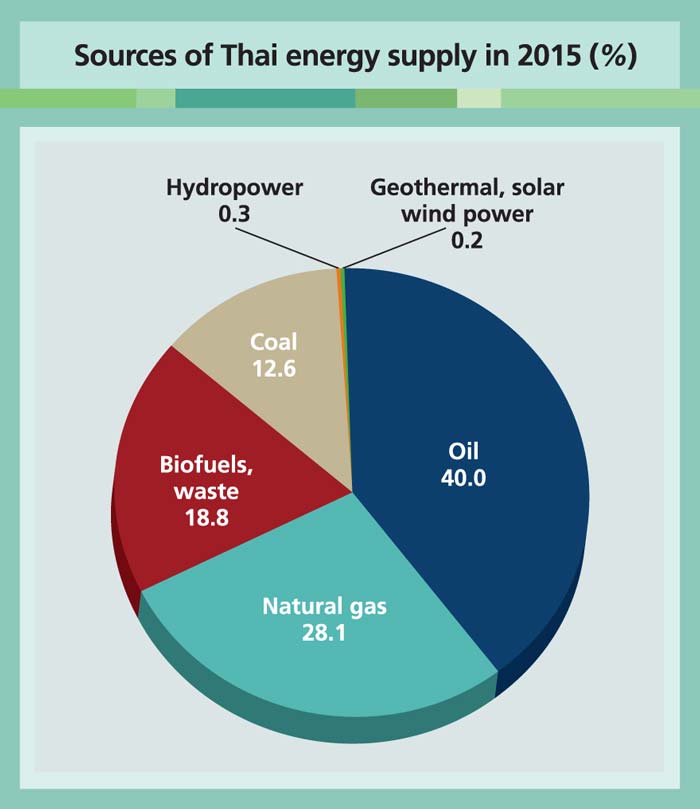
Source: International Energy Agency
Note: Electricity trade not included
Once approved as meeting Thailand’s quality standards for vehicle fuel, ABC will use the refined methane gas to run its own natural gas-powered vehicles. Based on the outcome of pilot testing, ABC will develop further transportation initiatives to effectively utilise the renewable natural gas.
The project is supported by the Thai government, which has provided over 40% of the 35 million baht (US$1.1 million) that ABC has spent building the natural gas station.
With concerns growing about the depletion of domestic natural gas reserves – the principal source of electricity in Thailand – the government is keen to develop new sources of energy.
It is therefore looking to biogas to help raise the share of renewable energy sources in the country’s overall final energy consumption to 30% by 2036.
The clean energy campaign is also driven by growing concerns about the heavy dependence on imported energy. Thailand uses imports for over 40% of its energy needs, according to the International Energy Agency.
The government views biomethane as an important energy source that can help the country wean itself off its reliance on imports, a top official at the Ministry of Energy said.
Since agriculture is one of Thailand’s most prominent industries, there is an abundance of biomass resources. These include oil palm residue; the remnants of sugarcane crushed to extract juice; and food factory wastewater. The use of natural gas vehicles is also becoming more prevalent in Thailand.
Sources: Business Wire, Nov 26, 2017; NVG Global News, Dec 3, 2017; Nikkei Asian Review, Jan 5, 2018
Malaysia enhances use of oil palm trunks, rubber trees
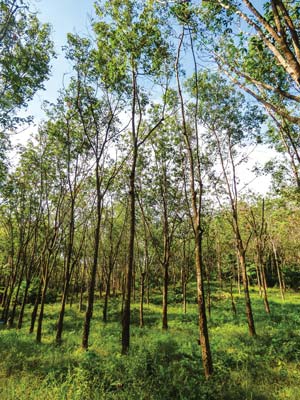
Malaysia is making better use of wood from oil palm trunks and rubber trees, given the versatility and durability of this raw material.
The move away from hardwood timber is also in line with efforts to conserve the country’s natural forests, said Malaysian Timber Industry Board (MTIB) director-general Datuk Dr Jalaluddin Harun.
Timber industry players are looking at using raw materials from rubber trees and oil palm trunks to produce veneer, plywood and panels, he said.
“We have relatively huge rubber and oil palm plantations. Currently, 80% of our furniture exports [are made of] rubber wood. The future of the plantation sector is secure,” he said.
Malaysia has close to 1.1 million ha of rubber estates to sustain demand for timber downstream businesses.
“We also have 5.7 million ha of oil palm plantations. These estates undergo replanting after 25 years. We have about 80,000 ha to 100,000 ha of oil palm plantations available for harvesting and replanting annually,” he said.
Currently, five factories produce veneer plywood and soft-timber made from oil palm trunks.
Jalaluddin said the National Forestry Department is also active in replanting trees: “In that sense, we are managing the situation sustainably for the future. For example, we plant Acacia mangium. We have more than 300,000 ha in Sabah, Sarawak and Peninsular Malaysia.”
Malaysia is the world’s eighth-largest exporter of wooden furniture. Japan is its biggest market for timber exports, followed by the US, European Union, India and Australia.
The MTIB also encourages the import of raw materials from North America, Europe, Africa and Latin America to add value to the furniture-making chain. Finished products are then exported at a premium price.
Logs are processing into furniture parts and building components like flooring, wall panels and mouldings, said an industry player.
Affin Hwang Capital plantation analyst Nadia Aquidah said timber is in scarce supply globally due to reduced availability of natural forest logs.
“There is no problem in selling our logs [while] the demand for plywood remains stable,” she added.
Within this scenario, oil palm smallholders have been urged to make better use of oil palm trunks whenever they carry out replanting.
Plantation Industries and Commodities Minister Datuk Seri Mah Siew Keong said the sale of oil palm trunks would generate additional income for the small farmers.
About 18 million mature oil palm trunks are produced every year during replanting exercises in Malaysia, with 136 oil palm trunks being extracted from every hectare planted, he noted.
Sources: New Straits Times, Dec 9, 2017; Bernama, Dec 19, 2017
Record volume of soybean imports by India

High domestic soybean prices coupled with a smaller crop in 2017 are causing processors in India to import a record volume of soybean this year. Reports indicate that they have contracted to import up to 100,000 tonnes since December 2017, with the 2017/18 total likely reaching 200,000 tonnes.
The shipments are said to be primarily sourced from Ethiopia and Benin – likely re-exports – because those countries have preferential access to the Indian market. India’s most-favoured nation tariff rate is 30%, and it does not allow the importation of genetically-modified (GM) soybean.
Over the last five crop years, the average soybean yield in India has been about 0.8 tonnes/ha. The crop is almost exclusively grown under dryland conditions and subject to the vagaries of rainfall during the monsoon season.
Many farmers do not want to grow soybean because of the low yield and despite the government’s guaranteed high minimum price. With some forecasters now predicting below-average rainfall during the upcoming monsoon season, it appears that 2018 may not be a good year for Indian soybean production.
Indian soybean meal demand is rising at about 10% annually due to its rapidly growing poultry and aquaculture sectors, and there is no foreseeable way that domestic soybean production is going to keep up.
Source: Ag Perspective, March 13, 2018
China to import 100 million tonnes of soybean in 2017/18?
JY Chow, a food and agriculture analyst with Japan’s Mizuho Bank, has predicted that China will import 100 million tonnes of soybean in 2017/18. He based this forecast on a rapidly growing swine sector that is requiring more soybean meal.
Muyuan Foods Co Ltd, China’s second-largest swine producer, recently indicated that the company plans to boost the number of hogs it will produce and slaughter to 12 million, up from 7 million in 2017.
An increase in China’s soybean imports may also be partly driven by expectations that it will export more meal in 2017/18. One trader has told Reuters that he estimates the country will export 2 million tonnes, almost double the volume in 2016/17.
The increases are anticipated because the drought in Argentina will likely reduce the amount of soybean meal that it exports. Another trader told Reuters he expects China will export more meal this year to Japan, Vietnam, Thailand and Indonesia, among other countries.
China imported 93.5 million tonnes in MY 2016/17, and the USDA is forecasting 97 million tonnes in 2017/18. The total increased by an average 6.9 million tonnes over the previous five years; therefore, achieving 100 million tonnes is certainly a possibility.
China’s growing demand for soybean makes it very unlikely that the country will retaliate against US soybean exports, as some have suggested. Even if it took all the soybean exported by Brazil, Argentina, Paraguay and Uruguay, China would still need to import about 25 million tonnes from the US.
In addition, the US would simply export to the other nations that could no longer source from those origins. Retaliation against US soybean would also be disproportionate since the volume exported to China in 2016/17 was valued at over $14.5 billion versus US imports of Chinese steel and aluminum worth slightly less than $1.7 billion.
Source: Ag Perspective, March 13, 2018
By gofb-adm on Monday, January 15th, 2018 in Issue 4 - 2017, Market Briefs No Comments
Summary
Indonesian biodiesel consumption to drop in H2 2017?
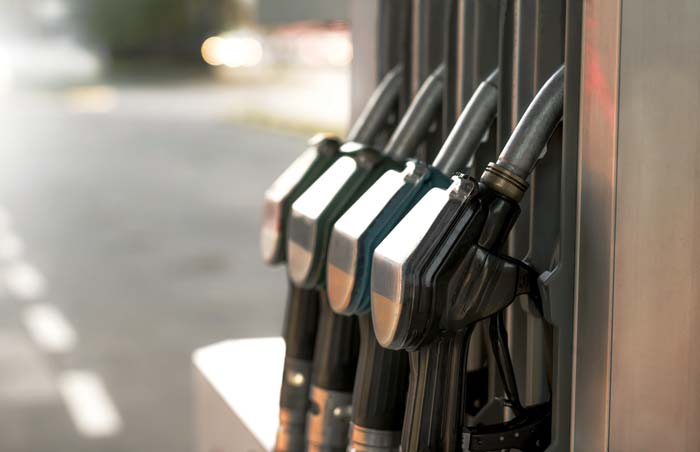
Dono Boestami, chief executive at the government agency Indonesia Estate Crop Fund, expects a slowdown in domestic biodiesel consumption in the last six months of 2017 due to “some technical difficulties”.
In the first six months, domestic biodiesel consumption reached 1.7 million kilolitres. However, this is expected to fall to 0.9 million kilolitres in the second half of the year, resulting in an estimated total of 2.5 million kilolitres in 2017. In the near future, Boestami wants to boost the consumption volume to 3.5 million kilolitres per year.
Through government sponsored programmes, local authorities encourage the production (and consumption) of biodiesel. Considering that Indonesia – which is Southeast Asia’s largest economy –is also the world’s biggest palm oil producer, it can produce palm biodiesel in a relatively cheap way.
Moreover, biodiesel consumption eases Indonesia’s rising reliance on imports of crude oil-based fuel and curbs the country’s greenhouse gas emissions. In the B20 biofuels programme that was launched in 2016, the government set a minimum 20% blend of bio-content in diesel fuel, up from 15% in 2015.
Meanwhile, Fadhil Hasan, board member of the Indonesian Palm Oil Association, said palm oil production will increase to 38.5 million tonnes in 2018, up from an expected 36.5 million tonnes in 2017.
Indonesia’s palm oil exports are expected to rise to 29 million tonnes in 2018, from an expected 28 million tonnes in 2017. Crude palm oil prices are likely to average between US$700 and $710 per tonne in 2017 on a CIF Rotterdam basis.
Source: www.indonesia-investments.com, Nov 3, 2017
US anti-subsidy duties hit biodiesel imports
In a final ruling released on Nov 9, the US Commerce Department set anti-subsidy rates in the range of 34.45-64.73% for palm biodiesel imports originating from Indonesia. This was slightly lighter than the preliminary 41.06-68.28% range set in August 2017.
The final duties for soybean-based biodiesel from Argentina were set in the range of 71.45-72.28%, higher than the preliminary countervailing rates set in August 2017. The government of Argentina said it may take the dispute to the World Trade Organisation (WTO).
The issue arose when US biodiesel producers complained about the ‘dumping’ of biodiesel in the domestic market by Indonesian and Argentine exporters. They were alleged to even sell their products below the market value.
Indonesian exporters are able to sell cheap palm biodiesel in the US because the government subsidises production through its B10, B15 and B20 programmes. Under these programmes, diesel is blended with a mandatory amount of fatty acid methyl ester (derived from palm oil). The programmes aim at limiting imports of fuel into Indonesia.
The Trade Ministry of Indonesia had earlier emphasised that the subsidy programme is only meant for biodiesel sold in the domestic market.
Also on Nov 9, Indonesia lost an appeal ruling at the WTO in a dispute with the US and New Zealand over restrictions on imports of food and animal products, such as meat and poultry. Indonesia had been setting import barriers due to health concerns, halal food standards, and to deal with a temporary surplus in the domestic market.
New Zealand and the US took the case to the WTO panel, claiming Indonesia’s move was a violation of their trade agreements. In December 2016, a panel of adjudicators faulted Indonesia, leading to the appeal and the ruling.
Source: www.indonesia-investments.com, Nov 10, 2017
India hikes import tax on edible oils to 10-year high

India, the world’s biggest edible oils importer, has raised the import tax on these products to the highest level in more than a decade, to try and support its farmers. The duty increase will lift oilseed prices and their availability for crushing in the domestic market, helping the country in capping edible oil imports in the 2017/18 marketing year, which started on Nov 1.
India doubled the import tax on crude palm oil to 30%, while the duty on refined palm oil has been raised to 40% from 25% earlier, the government said in an order. The import tax on crude soybean oil was increased to 30% from 17.5%, while on refined soybean oil it was raised to 35% from 20%.
Indian oilseed crushers have been struggling to compete with cheap imports from Indonesia, Malaysia, Brazil and Argentina that have reduced demand for local rapeseed and soybean, even after a steep fall in oilseed prices.
The second increase in import tax in less than three months will push up domestic edible oil prices and support prices of local oilseeds like soybean and rapeseed, said BV Mehta, executive director of the Mumbai-based Solvent Extractors’ Association.
Soybean and rapeseed prices have been trading below the government-set price level in the physical market, angering farmers. India relies on imports for 70% of its edible oils consumption, up from 44% in 2001/02.
Even after the duty increase, India will need to import about 15.5 million tonnes in 2017/18, down from earlier estimate of 15.9 million tonnes, but higher than last year’s 15 million tonnes, said Sandeep Bajoria, chief executive of the Sunvin Group, a vegetable oil importer.
“The duty hike will have marginal impact on imports. India has to import due to huge demand,” Bajoria said.
The government also raised the import duty on soybean, canola oil and sunflower oil.
Source: Reuters, Nov 17, 2017
By gofb-adm on Friday, September 1st, 2017 in Issue 3 - 2017, Market Briefs No Comments
Summary
Indonesia expects substantial yield increases with new oil palm materials
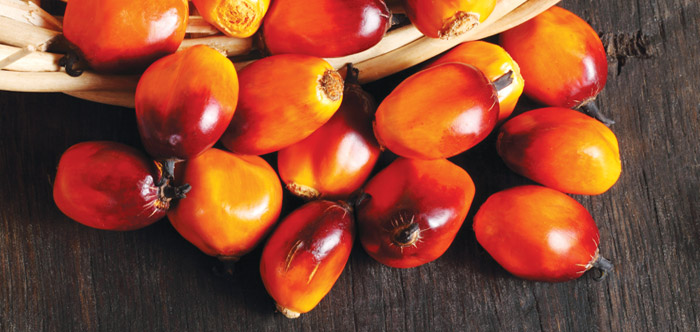
PT SMART Tbk, a subsidiary of Singaporean palm oil company Golden-Agri Resources Ltd, announced on May 22 that it had cultivated high-yielding oil palm planting materials that could “substantially” increase the yield from its plantations without increasing land use.
The two materials – Eka 1 and Eka 2 – were developed at the SMART Research Institute and SMART’s Biotechnology Centre, through a conventional selection programme and tissue culture from “elite palms”.
“Tissue culture helps us propagate planting materials through a non-GMO process that produces more CPO; and, in the near future, it will help to produce planting materials that make better use of nutrients and are more resistant to both disease and drought,” said SMART’s head of plant production and biotechnology division Tony Liwang.
The materials could increase SMART’s CPO yield to more than 10 tonnes/ha/year at the prime palm production age of 8-10 years, from its current yield of 7.5-8 tonnes/ha/year under optimal soil conditions, according to the company. Indonesia’s industry average yield is still under 4 tonnes/ha/year, SMART said.
“With the success to date of our tissue culture programme, we can expect to see substantially higher yields with Eka 1 and Eka 2, and greater oil extraction levels from the fruit itself,” Liwang said.
SMART expects the Eka 1 seedling to produce 10.8 tonnes/ha of CPO at prime maturity, with oil extraction levels of 32% due to increased oil ratio in the fruit, while the Eka 2 seedlings are projected to yield 13 tonnes/ha and 36% oil extraction.
Furthermore, the company expects the seedlings to reach the first harvest in 24 months, in contrast to the current industry average of 30 months.
It intends to multiply the seedling clones through tissue culture over the next five years to cultivate a sufficient quantity to plant over a larger commercial area by 2022.
SMART started developing the materials in 2007, when its research team studied more than 4,000 oil palm trees for differing varieties. Field technicians selected and bred the optimal specimens over the next 10 years.
The first clonal seedlings were planted in 2011. Following several trials and commercial pilots, Golden-Agri Resources had by 2016 planted the materials in Sumatra and West Kalimantan in Indonesia.
Source: Oils & Fats International, June 2, 2017
Reserved dairy names barred for plant-based products in the EU
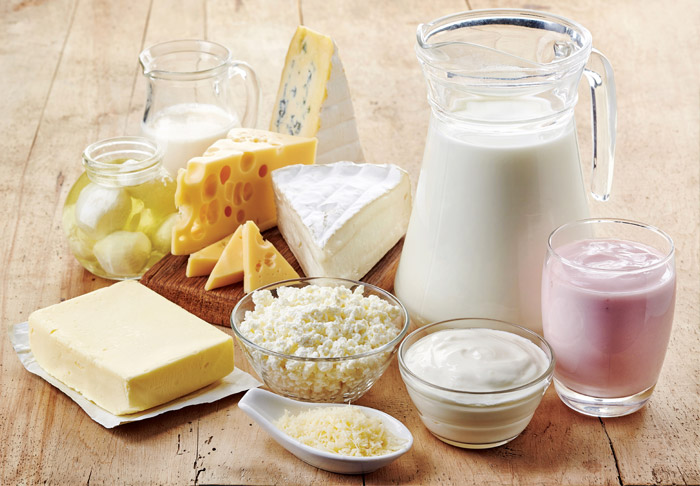
On June 14, the European Court of Justice (ECJ) ruled that plant-based products cannot be labelled with dairy names such as ‘milk’, ‘cheese’ or ‘butter’ even if the plant origin is clearly marked on the label.
The ECJ ruling gives a very strict interpretation of the EU’s rules on the use of designations reserved for milk and milk products. This was in a case brought against a German company for marketing vegetarian and vegan products labelled with dairy names such as ‘tofu butter’ and ‘veggie cheese’.
The ECJ concluded that for marketing and advertising purposes, in principle, the designations ‘milk’, ‘cream’, ‘butter’, ‘cheese’ and ‘yogurt’ are reserved under EU law for products of animal origin only.
Its ruling prohibits the use of dairy names in association with purely plant-based products unless the names are included in the EU list of exceptions. The ECJ also clarified that this prohibition applies even when the plant origin of the product is stated, because the addition of descriptive and explanatory terms cannot completely rule out consumer confusion.
The ECJ ruling is an interpretation of the EU’s Single Common Market Organisation (CMO) 1308/2013 which repealed Regulation 1234/2007. The Single CMO establishes marketing standards for milk and milk products and sets out definitions, designations or sales descriptions that may only be used for the marketing of dairy products.
By way of exception, the Single CMO allows the marketing of plant-based products under the reserved designations when the exact nature of the product is clear from traditional usage (e.g. coconut milk) and/or when the designations are clearly used to describe a characteristic quality of the product (e.g. creamy).
The EU’s first Single CMO Regulation 1234/2007 required member-states to provide to the European Commission (EC) an indicative list of non-dairy products meeting the criteria. Based on the lists submitted, Commission Decision 2010/791 – in force since December 2010 – has established a list of non-dairy products that may be labelled with reserved dairy names.
The list of exceptions is a collection of product names grouped per language (not product). Product names included in the list are not translated in all EU languages. The English-language term ‘almond milk’ for example is not included in the list, but the French, Spanish and Italian terms ‘lait d’amandes’, ‘leche de almendras’ and ‘latte di mandorla’ are.
The ECJ does not accept translations of product names included in the list as falling within the scope of authorised exceptions. The EC has clarified that, in the event of a dispute, it is ultimately for the ECJ to provide a definitive interpretation of the applicable EU law.
Source: USDA, July 11, 2017
Nutella maker wins court battle against ‘No palm oil’ claim
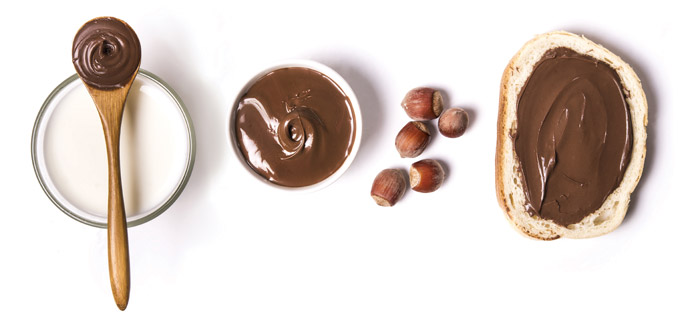
A Belgian court has ruled that advertising claims about the health and environmental benefits of the palm oil-free Choco spread are illegal, in a case brought against the supermarket chain Delhaize.
Ferrero, which manufactures Nutella, took the case to court. Delhaize has been ordered not to repeat any claims about its Choco spread being better for the planet or human health, on pain of a €25,000 (£22,000) fine for each repetition.
Source: www.theguardian.com, June 19, 2017
European chemicals agency refutes accusations linked to glyphosate
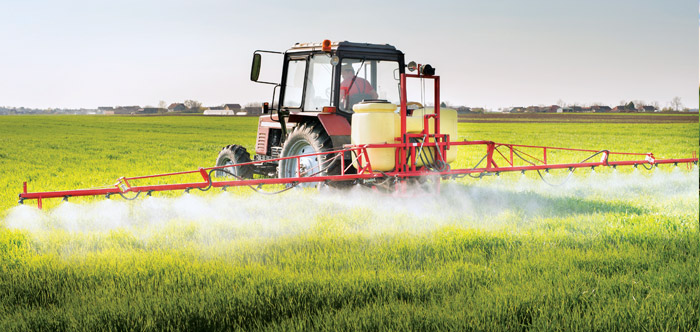
The European Chemicals Agency (ECHA) has fired back at NGO accusations that it carried out a malicious attempt to undermine the authority of the EU’s food safety agencies and their assessment of the ubiquitous herbicide glyphosate.
The ECHA also refuted claims it breached EU regulations and colluded with the pesticide industry when assessing the carcinogenicity of the herbicide.
In March, Global 2000 – a consortium of NGOs including Friends of the Earth and the Pesticide Action Network in Europe – released a stinging report. This argued that industry-funded studies showing that glyphosate is safe contained “fundamental scientific flaws” due to the omission of key data and inclusion of irrelevant data.
These studies were then used by both the European Food Safety Authority and the ECHA in their positive opinion of glyphosate.
“[The] ECHA is concerned [about] an attempt to publicly malign the integrity of EU institutions mandated to ensure safe use of chemical substances in the EU,” the Helsinki-based institution responded.
“This is of particular concern, when the process actually provides the opportunity to submit any further data and to make any science-based observations during the process.”
In making its assessment on glyphosate, it said “there was no collective preconception of whether or not the substance was hazardous for any of the end-points, let alone any collusion with industry, as alleged in the Global 2000 report”.
The ECHA’s opinion will be taken into consideration by member-countries who must vote on whether to renew the licence for glyphosate by the end of the year.
Source: www.politico.eu, Aug 8, 2017
By gofb-adm on Thursday, June 29th, 2017 in Issue 2 - 2017, Market Briefs No Comments
Summary
Brazil in push for GM-free soybean
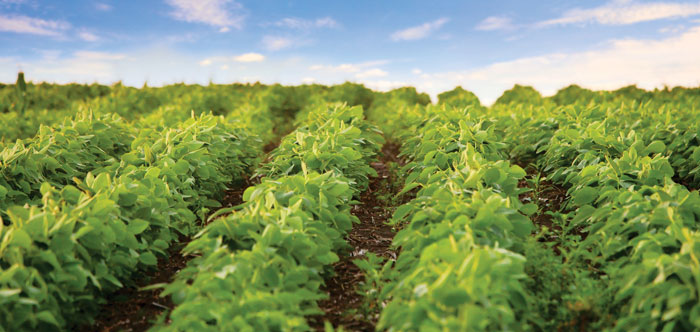
A movement to replace genetically modified (GM) soybean with conventional seeds is gaining traction in Brazil’s largest soybean-producing state of Mato Grosso, as farmers anticipate growing demand from Asia and Europe.
Brazil was an early adopter of transgenic crops and more than 96% of its soybean harvest is of GM varieties, which helped to transform the country into the world’s largest soybean exporter.
Biotech crops, such as corn, soybean and cotton, are genetically modified to resist pests or disease, tolerate drought or withstand sprayings of weed killers like glyphosate, the active ingredient in Monsanto Co’s herbicide.
Wininton Mendes, coordinator of a programme to promote the use of conventional seeds – run by Mato Grosso growers and the government agricultural research agency Embrapa – said doubts about the impact of GM food on human health are a driver behind demand for conventional raw materials.
Proponents of biotech crops say that the technology lowers the cost of food and helps farmers to manage pests and diseases more safely. But some consumers and environmental groups argue that GM crops boost pesticide use and pose threats to the environment and human health.
Mendes said Mato Grosso’s drive to plant more conventional soybean is backed by three trading firms – Amaggi SA, Imcopa International SA and Caramuru Alimentos SA – which pay a premium. The average premium stood at 12 Reais per 60kg bag of GM-free soybean this season.
Reintroduction of conventional soybean creates a niche market for farmers with deep pockets, since non-GM crops require strict controls to avoid contamination during production and shipping, which may raise costs.
Encouraged by the premium paid this season, farmers may plant more non-GM soybean in the next cycle, said Daniel Ferreira, the superintendent of agricultural research agency Imea. However, for many farmers, the difficulty remains the availability of seeds.
An estimated 13.6% of the 2016/17 soybean harvest in Mato Grosso was of the conventional variety. This was down slightly from 15% previously as Brazil’s conventional seeds supply remains low, said Mendes.
Soybean demand from China, a major factor in Brazil’s agricultural expansion, remains strong. However, a consumer backlash there against GM crops is beginning to dent demand for soybean oil, its main cooking oil; this could spell trouble for the crushing industry, which relies on GM soybean from Brazil and the US.
China, which does not grow GM soybean, needs 11 million tonnes of conventional soybean for food production per year, said Lin Tan, an executive at Hopefull Grain & Oil Group. Local farmers cannot supply at least 3 million tonnes of demand from crushers, and the “additional grains must come from somewhere”.
A group of 14 EU countries imported about 2.7 million tonnes of non-GM soybean meal equivalent, according to a 2015 report, and there is potential demand from India, Mendes said.
Brazil’s Agriculture Minister Blairo Maggi said the country needs to step up research to develop conventional seeds for mass production. He cautioned that the government has no funds to promote GM-free soybean production, adding there is space for both kinds in the marketplace.
Source: Reuters, May 11, 2017
Russian soybean oil exports keep up record pace

Russia exported 53.8 kilo metric tonnes (KMT) of soybean oil in March – almost 53% more than in the previous month (35.2 KMT) – and up 86% from March 2016. This was the second-biggest shipment after the 63.2 KMT exported last October.
The top importers in the 2016/17 season include Algeria (152.9 KMT or 51% of total exports), Tunisia (32.5 KMT or 11%) and Cuba (29.7 KMT or 10%). China remains a major importer, although it decreased purchases to 28.4 KMT, against 35.5 KMT a year earlier.
In addition, the current season features an expansion of the range of export destinations to countries like Saudi Arabia, Venezuela, Rwanda, Haiti and Yemen.
Source: UkrAgroConsult, May 8, 2017
Malaysia to defend palm oil in Europe
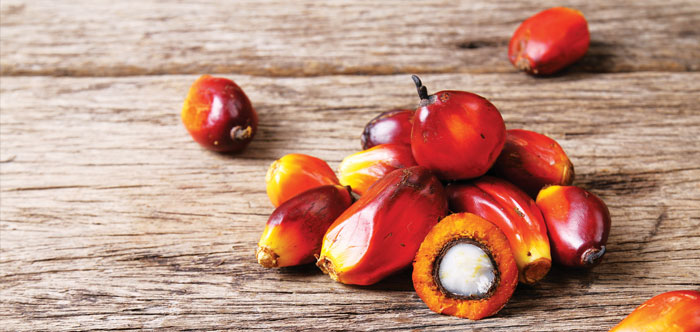
Malaysia remains ready to defend its palm oil industry, following the European Parliament’s support for the ‘Resolution on Palm Oil and Deforestation of Rainforests’.
Plantation Industries and Commodities Minister Datuk Seri Mah Siew Keong said in a statement that the Ministry is ready with credible facts and figures “to face those unfair, biased and distorted allegations about the palm oil industry”.
The Resolution, adopted on April 4, calls on the EU to phase out by 2020 the use of vegetable oils – including palm oil – in biodiesel, if produced in an unsustainable way that leads to deforestation. It also wants a single EU-led certification scheme to be drawn up for palm oil.
At the 30th ASEAN Summit in Manila in late April, leaders issued a statement urging the EU to recognise the palm oil sustainability certification schemes of the region’s producer countries. They noted that these government-led schemes also demonstrate ASEAN’s commitment to the UN’s Sustainable Development Goals.
Mah said the region’s palm oil industry supports the livelihood of 3.5 million smallholders, mainly in Malaysia, Indonesia and Thailand.
The EU imports between 7 million tonnes and 7.5 million tonnes of palm oil annually. Last year, Malaysia accounted for 29.4% of the imports, while Indonesia supplied 48.6%. Malaysian palm oil exports to the EU were valued at RM9.9 billion.
On April 5, Datuk Seri Mah had said that Malaysia and Indonesia would team up to convince European Parliament lawmakers that the two countries are already taking steps to ensure that oil palm production activities do not harm the environment.
“We know that the global community is concerned about the environment and deforestation, but it is unfair just to target palm oil […] . We want to be given a chance to address the lawmakers […] as to why we feel the resolution is unfair to palm oil,” he said.
The minister said he would also fight for the EU to recognise the Malaysian Sustainable Palm Oil certification scheme. All plantations must be certified by December 2018. Estates and smallholdings have until June and December 2019 respectively, to achieve certification.
Sources: Bernama, May 4, 2017; The Star Online, April 6, 2017
Labour shortage in Malaysian oil palm plantations
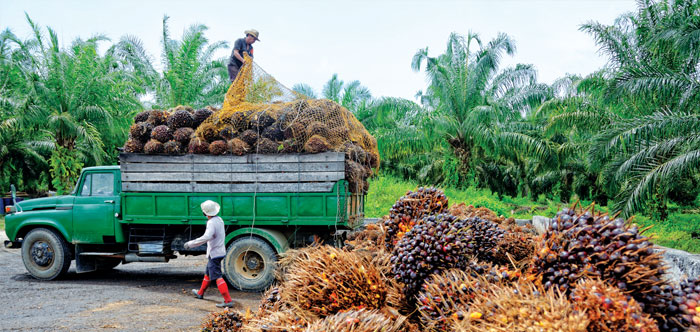
Malaysian oil palm planters are bracing for a severe labour shortage, with Indonesian workers staying away due to the weaker Ringgit and increased opportunities at home. This could delay harvests and curb output, as extraction rates fall when fruit is picked late.
About 70% of the workforce in the Malaysian oil palm industry comes from Indonesia. But the Ringgit has plunged in value, falling 15% against the Indonesian Rupiah since the start of 2015.
That, along with increased demand for labour in Indonesia as new plantations open there, is cutting the number of workers prepared to head for Malaysia, planters said. Some also cited tighter employment regulations in Malaysia, with stricter Immigration procedures for foreign workers.
“This year, output will be impacted by [the shortage of] workers,” said Datuk Zakaria Arshad, chief executive of Felda Global Ventures Bhd, one of Malaysia’s largest oil palm plantation operators. “Workers are more difficult to get now, especially from Indonesia.”
Plantation workers usually make little more than the minimum wage, which is about RM1,000 in Peninsular Malaysia and 3.35 million Rupiah in Indonesia.
Indonesia is the world’s top producer of palm oil, churning out 31.8 million tonnes last year. Malaysia produced 17.3 million tonnes.
Source: Reuters, April 8, 2017
Pacts to promote Malaysian palm oil in India
The Malaysian Palm Oil Council has signed pacts with two bodies in India – the Solvent Extractors Association and the Mumbai Dabbawala Association – to extend acceptance of palm oil among food manufacturers and consumers.
The memorandum of understanding (MoU) with each was exchanged in the presence of Malaysian Prime Minister Datuk Seri Najib Abdul Razak, a statement said. It aims at educating consumers on the nutritional and health properties of Malaysian palm oil, as well as its uses.
With their outreach to consumers by way of distribution of daily meal-boxes, the Dabbawalas are in a unique position to assist the MPOC in enhancing the image of Malaysian palm oil, the statement said.
Source: Press Trust of India, April 3, 2017
India set to boost oil palm cultivation
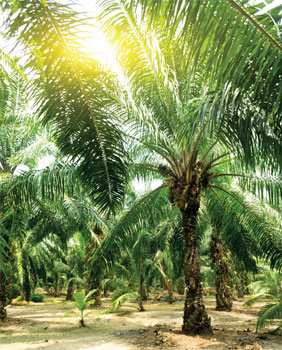
India’s government has relaxed the land ceiling for oil palm cultivation under the National Mission on Oilseeds and Oil Palm (NMOOP). The aim is to attract farmers and corporate bodies to boost output and cut imports.
Domestic production of edible oils stands at about 9 million tonnes, while demand is around 25 million tonnes. The gap is met through imports, valued at Rs 68,000 crore in 2015-16. Palm oil contributes 70% of the vegetable oil imports.
The Cabinet also revised norms for assistance under Mini Mission-II of the NMOOP. It approved revisions in assistance for planting materials, maintenance costs, inter-cropping costs and bore-wells. All this is intended to make investment in oil palm plantations more attractive and to help utilise waste land.
This programme is being implemented in 12 states – Andhra Pradesh, Karnataka, Tamil Nadu, Mizoram, Odisha, Kerala, Assam, Telangana, Chhattisgarh, Gujarat, Arunachal Pradesh and Nagaland. Nearly 133 districts are under oil palm cultivation in these states.
There will be some financial implications in relaxing restrictions on the acreage and upscaling the norms of subsidies, but this will be accommodated within the NMOOP fund, a statement said.
The government has promoted oil palm planting since 1986-87. From 2014-15, this was done via the NMOOP. The planted area has expanded from 8,585 ha in 1991-92 to about 3 lakh ha in 2015-16. An additional 1.3 lakh ha is planned to be cultivated in 2016-17.
Source: Press Trust of India, April 12, 2017
Benefits from Brexit for Malaysian palm oil?

Malaysia’s food-based exports, especially palm oil, could reap trade opportunities through the changes created by the UK’s departure from the EU.
Glenreagh Sdn Bhd Managing Director Nordin Abdullah expects better opportunities for Malaysian companies with the capacity to operate in highly-regulated and competitive environments.
“It is no secret that certain countries in the EU are less receptive to imports of palm oil for protectionist reasons. Malaysia can now [re-examine how it deals] with the issue, as regulations and attitudes can change post the UK’s departure,” he said in a statement today.
Nordin said that, in the short-term, both the UK and EU economies will be competing for trade and investments with external parties.
In February, Malaysia’s exports of palm oil to the EU and the UK stood at 153,165 tonnes and 1,759 tonnes respectively.
Source: Bernama, March 30, 2017
MSPO-certified palm oil for Europe by year-end
Malaysia will send its first consignment of domestically-certified palm oil to Europe by the end of the year, said Minister of Plantation Industries and Commodities Datuk Seri Mah Siew Keong.
Malaysia’s target is to send 5 million tonnes of certified oil to Europe by 2019. The industry will also continue to engage with European buyers, he told a press conference.
He said that mandatory implementation of the Malaysian Sustainable Palm Oil (MSPO) standard by December 2019 is a move towards branding the output as being sustainably-produced and safe.
The government plans to organise more than 100 nationwide briefings on the MSPO up to next year, to enhance awareness among the 550,000 smallholders.
Source: Bernama, Feb 28 & March 30, 2017
Drop expected in India’s vegetable oil imports
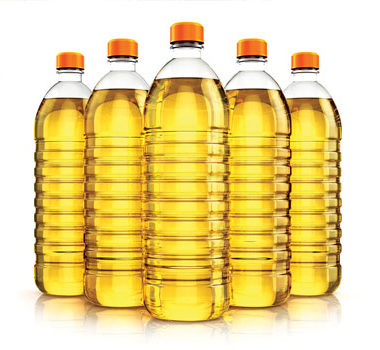
India’s booming edible oils imports are expected to decline or hold flat in the year to October 2017, failing to grow for the first time in six years as near-record domestic oilseeds output boosts supplies, industry executives said in Kuala Lumpur.
India, the world’s biggest edible oils importer, is expected to purchase about 14-14.5 million tonnes of vegetable oils this year, compared to 14.5 million tonnes in 2015/16.
“We are going to have an additional [1.2] million tonnes of edible oils this year because of higher soybean production last year, and expectations of a bumper rapeseed crop which will be harvested in the coming months,” said Sandeep Bajoria, chief executive of Mumbai-based brokerage Sun Win Group.
India’s edible oils purchases – mainly palm oil from Malaysia and Indonesia and soybean oil from Argentina – have risen each year since 2010/11, according to US Department of Agriculture data. The imports have grown at an average of 11% a year.
India’s soybean crop, harvested in October, rose to 11.5 million tonnes, up from 7 million tonnes a year ago. This was the biggest annual output jump in more than a decade, boosting supplies and dragging down prices.
Rapeseed production is forecast to rise to 7 million tonnes, from 5.8 million tonnes a year ago, Bajoria said.
India’s soybean oil imports are expected to decline to 3.4 million tonnes from 4.3 million tonnes a year ago. However, palm oil imports are forecast to rise to 8.8 million tonnes this year from 8.4 million tonnes last year.
Source: Reuters, March 6, 2017
Indonesia seeks better productivity in oil palm planting
The Indonesian Palm Oil Board (DMSI) – an umbrella organisation of the country’s main palm oil associations – says higher productivity will be the key to boosting CPO production.
Amidst international pressure, particularly after the devastating forest fires in Sumatra and Kalimantan in the second half of 2015, President Joko Widodo had announced a five-year moratorium on new concessions in order to limit the expansion of oil palm plantations.
Although the authorities want higher CPO output to safeguard foreign exchange earnings and create employment opportunities, further growth should come on the back of rising productivity, not by adding new plantations.
DMSI Chairman Derom Bangun said higher productivity should be achieved by replanting. Currently, the average production is close to 3.7 tonnes/ha/year. This should be raised to at least 5 tonnes/ha/year. The estimated maximum (perfect) productivity is 9 tonnes per ha, but this is considered too difficult to achieve.
Without higher productivity, the moratorium will curtail growth of the palm oil industry, both in terms of production and plantation size. Bangun said the sector had expanded by 13-15% per year in the 1990s, in production and plantation size. However, over the past couple of years, growth had fallen to 5-8% per year.
The palm oil sector is one of the key foreign exchange earners for Indonesia and provides employment to millions, especially in Sumatra and Kalimantan.
Indonesia’s oil palm plantation size is currently estimated at 11 million ha. Bangun said that, if productivity can be raised to 6 tonnes/ha/year, then CPO production would nearly double to 66 million tonnes per year.
The Indonesian Palm Oil Association said CPO production recorded 34.5 million tonnes in full-year 2016, down 3% from 35.5 million tonnes the previous year. The drop was due to the impact of the El Nino phenomenon, which brought dry weather to Southeast Asia in 2015.
Source: www.indonesia-investments.com, Feb 18, 2017
RM50mil R&D boost for Malaysia’s palm oil sector
Malaysia has allocated RM50 million to develop the quality of its palm oil, said Plantation Industries and Commodities Minister Datuk Seri Mah Siew Keong.
The money will be disbursed as matching grants for research and development to improve the safety and quality of Malaysian palm oil and derived products.
“R&D will be done on a joint-venture basis with the private sector,” he said, noting that the scientific research will focus on eliminating contaminants in palm oil.
He said palm oil is already safe in terms of nutritional value, and that research would make it even better.
Malaysian-owned palm oil mills and refineries based in the country will be eligible to apply for funds via the allocation.
Source: The Star Online, March 8, 2017
These are edited versions of the articles.
By gofb-adm on Friday, March 3rd, 2017 in Issue 1 - 2017, Market Briefs No Comments
Summary
Malaysia targets higher revenue from export commodities

The Plantation Industries and Commodities Ministry is aiming to grow Malaysia’s exports of commodities by 5-8% this year through the implementation of strategic measures.
“This will be done by expanding our market share while penetrating new markets, including [negotiating] a free trade agreement with Iran and exploration of new markets in south Asia and southern Europe,” said the Minister, Datuk Seri Mah Siew Keong.
These initiatives are expected to maintain the momentum of the country’s commodities segment, which consists of palm oil, rubber, wood, cocoa, pepper and kenaf products.
“[From] January to October 2016, [exports of] commodities grew 2% to RM99.2 billion from the year before. The commodities sector also accounted for 15.6% of national exports,” the Minister said.
The Ministry will continue to invest in research and development in order to develop higher value-added downstream products, as well as to improve current export products.
“The R&D work will increase the marketability and competitiveness of our exports in the global arena,” Datuk Seri Mah said.
Source: Malaysia Reserve, Jan 6, 2017
Change at the helm of Malaysia’s FELDA
Tan Sri Shahrir Abdul Samad has been named the new Chairman of the Federal Land Development Authority (FELDA) in line with the Malaysian government’s aspiration to strengthen the agency’s leadership.
He has wide experience in government administration, having previously held three Cabinet portfolios at different times. He was once the Chairman of the Malaysian Palm Oil Board and of the parliamentary Public Accounts Committee.
Tan Sri Shahrir replaces Tan Sri Mohd Isa Abdul Samad whose term ended, although he remains Chairman of Felda Global Ventures Holdings Bhd. During his tenure, FELDA had implemented many community activities and programmes to enhance the quality of life of settlers and their families.
In a statement, Prime Minister Datuk Seri Najib Abdul Razak said that with the restructuring, there is a division of responsibilities in regard to the settlers’ welfare and socio-economic status, and FELDA’s business activities.
Source: Bernama, Jan 7, 2017
Malaysia, Indonesia to discuss common CPO tax structure

Malaysia is open to negotiations with Indonesia over the possibility of harmonising the CPO export duty structure of both countries.
Malaysian Plantation Industries and Commodities Minister Datuk Seri Mah Siew Keong said a meeting will be held in the coming months.
“When I say harmonise the CPO tax structure, it doesn’t mean Malaysia will compromise to our disadvantage. We want to discuss […] the possibility of a common tax structure which does not conflict the trading of our palm oil in the world market,” he explained.
Currently, the wide gap in Indonesia’s export duty differential between CPO and refined palm oil encourages more production of refined palm oil; this has resulted in increased competition with Malaysia, particularly in the downstream sector.
“When you add a new system, there will be some losses and benefits to the respective players, but we will try to combine it to strike a balance for our overall exports,” the Minister said.
On export performance, he noted that the Malaysian palm oil market share in China had fallen to 45.7% in 2015 from 52% in 2014, while Indonesia’s market share rose to 53.9% from 47% over the same period. However, efforts are being made to woo back buyers.
Datuk Seri Mah also stressed the significance of diversification to new products and securing new markets.
“We want to go to the Middle East, as well as ASEAN countries such as the Philippines and Vietnam. I am going to Iran [this month] to negotiate higher imports for our palm oil. These are the new markets,” he added.
Source: The Star, Jan 16, 2017
RM30mil fund set up to mechanise oil palm fruit harvesting in Malaysia
Malaysia is establishing a RM30 million fund to improve the mechanisation of oil palm fruit harvesting,
Plantation Industries and Commodities Minister Datuk Seri Mah Siew Keong said: “We have to be more committed in finding more efficient ways to harvest oil palm fruit. We cannot go on being so reliant on manual labour.”
Some 70% of Malaysia’s oil palm estate workers are foreigners.
“This year, we are celebrating 100 years of commercial oil palm planting, but we have yet to improve on mechanisation of fruit harvesting. Of the RM30 million mechanisation fund, RM5 million will be privately-funded,” the Minister said.
It has been reported that Malaysia’s oil palm industry is facing a shortage of workers, resulting in many planters not being able to fully harvest the fruit.
Source: New Straits Times, Jan 17, 2017
Malaysian CPO output has doubled every 10 years over centennial
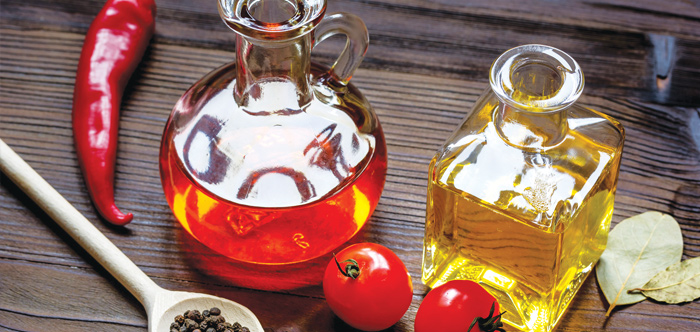
Malaysia, one of the world’s largest producers of CPO, enters the milestone centennial celebration of the sector in 2017 amidst tremendous growth.
Output has doubled every 10 years and the country’s track-record of providing quality vegetable oil to consumers worldwide, at reasonable prices, has helped alleviate poverty in many Third World countries.
Dorab Mistry, a leading industry analyst at Godrej International Ltd, endorses the country’s palm oil as its “Jewel in the Crown”. He said Malaysia has done wonders in terms of boosting export revenue.
“For 90 years, you [Malaysia] have been on your own. You are the Number One producer as you are doing all the propagation. You are being challenged by Indonesia on all fronts,” he said.
“So, while Malaysia celebrates 100 years, it has to re-dedicate itself to really take its competitor head on. At the same time, Malaysia must ensure that the markets it has, and the new markets that [it is] developing, go according to plan.”
Although Malaysia’s palm oil industry is expanding rapidly, labour shortage has been an issue – and it is becoming more difficult to source additional workers.
“Malaysia has got to do something about its labour regulations because the labour shortage is really strangling your plantations. It has been the biggest challenge facing the country’s CPO sector,” he said.
“However, against this backdrop, congratulations to Malaysia. I think if there is an example of a country which has nursed and nurtured an industry into great prosperity, I would hold Malaysia as a fine example.”
James Fry, Chairman of commodities consultancy LMC International, agreed that the Malaysian government needs to address the labour shortage issue, following its policy to reduce the number of foreign workers by 110,000.
“It is all right if you tell the industry how they will manage with fewer workers, but you have seen the impact, you have longer harvesting periods, lower quality and it hits your yield,” he said.
ISTA Mielke GmbH Executive Director Thomas Mielke said Malaysia has been the forerunner in palm oil and food research. He said palm oil has made major inroads not only into Asia, but also the African continent and central and South America.
“There has been tremendous increase in palm oil imports and consumption in Europe, as well as in the Commonwealth of Independent States countries,” he noted.
Source: Bernama, Nov 20, 2016
More palm oil for Indonesia’s biodiesel sector by 2020

Indonesian demand for CPO for biodiesel use will grow nearly 70% by 2020 as the price gap with conventional diesel narrows and more subsidies for blending become available.
Indonesia, the world’s top producer of palm oil, is pushing to increase usage of biodiesel to cut its oil import bill and curb greenhouse gas emissions. Its so-called B20 programme required a minimum 20% blend of bio-content in diesel fuel in 2016, up from 15% in 2015.
The biodiesel sector’s appetite for palm oil will increase to 10.6 million tonnes by the start of the next decade, from 6.3 million tonnes forecast for 2016, said Bayu Krisnamurthi, Chief Executive of the Indonesia Estate Crop Fund.
“Looking forward, we’ve calculated that by 2020, 26% of palm oil will go to biodiesel, so biodiesel becomes the new demand for the palm oil industry,” he said at a conference on Nov 23, 2016.
The fund is a government agency in charge of collecting palm oil levies to finance biodiesel subsidies in the country.
“The gap is getting thinner,” he said, referring to the spread between prices for biodiesel and conventional diesel coming down by around 30% in 2016 as oil prices strengthened.
The palm oil industry hopes the drive towards biodiesel will provide underlying support for prices of the edible oil.

Source: Indonesia Estate Crop Fund
The country is also targeting a 90% increase in unblended biodiesel consumption in 2017 to 5.5 million kilolitres, from an estimated 2.9 million kilolitres in 2016.
The 2017 target is “with the assumption that there is an expansion of subsidies”, said Dadan Kusdiana, Secretary of the Renewable Energy Directorate.
Indonesia started collecting a levy on its palm oil exports in July 2015 – US$50 per tonne for CPO and US$30 for processed palm oil products – and uses part of this to help fund biodiesel subsidies.
Levies collected by the Indonesia Estate Crop Fund would also need to be increased to pay for additional biodiesel subsidies, Kusdiana said, adding that his office had proposed an incremental increase. The fund is targeting a 14% increase in levies collected in 2017.
Source: Reuters, Nov 25, 2016
Phase 1 of new smallholder traceability system in place

GeoTraceability, Wilmar International Ltd and Wild Asia have announced that the first phase in the development of a new smallholder traceability system has been successfully completed.
The system enables mills to map their smallholder supply base and trace smallholder fresh fruit bunch (FFB) deliveries from the mills back to their farms. A key innovation in this project is the ability to provide smallholders with agronomic recommendations from mills and supporting organisations for increasing productivity, as part of their participation in the traceability system.
This project, supported by the Sustainable Trade Initiative (IDH), is currently underway in Wilmar’s Sapi Plantation in Sabah, Malaysia. The ability to trace smallholder FFB supply is critical to Wilmar in ensuring compliance by its third-party mill suppliers and independent smallholder suppliers, under its ‘No Deforestation, No Peat and No Exploitation’ policy.
Since July 2016, more than 90% of the smallholder supply base of the mill has been surveyed and mapped, with 1,400 traceable deliveries of smallholder FFB recorded. The next steps in the project are to roll out the system to an additional Wilmar-owned mill, as well as a third-party supplier mill, both in Sabah.
Jeremy Goon, Wilmar’s Chief Sustainability Officer, said: “Smallholders are a key stakeholder group in our pursuit of a sustainable and transparent supply chain. We have committed substantial resources to empowering smallholders to improve their livelihoods and to ensure they share in the benefits of oil palm development.
“Our collaboration with GeoTraceability and Wild Asia to develop this smallholder-specific traceability tool is a win-win for the industry and smallholders. Benefiting from agronomic expertise is an important incentive that will further strengthen sustainability take-up among smallholder producers. We hope this tool can help facilitate the traceability agenda of our external mill suppliers and the wider industry.”
Dr Reza Azmi, Executive Director and Founder at Wild Asia said: “Our Wild Asia Group Scheme is a programme to promote traceability and better production among groups of small independent oil palm producers.
“Systematic electronic data on the small producers means that we can accelerate our work, and that our agronomists can deliver individualised support to our group members. More importantly, we want to be able to empower local producers with tools that can provide meaningful insights to their own production data.”
Pierre Courtemanche, Chief Executive Officer at GeoTraceability, said: “Our software and training is designed to support mills, NGOs, development agencies and governments in better delivery of support to smallholders. This combination of tools supports a ‘New Deal’ for farmers: allow us to use your data to improve transparency and you’ll receive improved support services.”
GeoTraceability’s Digital Agronomist is a new software technology which allows the delivery of agronomists’ expertise to each individual smallholder farmer, and his or her fields.
The agronomic recommendations for increasing smallholder productivity are compiled in individual ‘Farm Business Plans’, which can be further supported with field-input credit, training and ultimately Roundtable for Sustainable Palm Oil group certification. This package of opportunities to improve productivity and profitability for smallholder farmers presents a compelling alternative path to the farm expansion model.
IDH has been working with industry actors to coordinate and accelerate progress on traceability since 2014 and is supporting platforms such as GeoTraceability as critical innovations on the path to sustainability. IDH is supporting the project financially and has informed project design with the objective of maximising lessons learnt, that may be of value to the wider industry.
Source: foodingredientsfirst.com, Nov 8, 2016
Global edible oils market valued at US$130bil in 2024

The global edible oils market is segmented into palm, soybean, sunflower, olive, corn and canola oils, as well as specialty blended oils and others. The palm oil segment is projected to register the fastest growth rate through the forecast period, with the segment accounting for over 32% share in the global market in terms of volume in 2015.
Soybean oil is projected to register a slight negative growth owing to the surplus availability of raw materials and shifting consumer preferences towards healthier edible oil options such as olive and canola oils. This shifting market trend is a result of increasing disposable income levels in households worldwide and growing awareness with regard to healthy eating.
According to a new report published by Persistence Market Research, ‘Global Market Study on Edible Oils: Industry Analysis and Forecast 2016-2024’, the global edible oils market is expected to register a CAGR of 5.1% through the forecast period to reach the value of US$130.3 billion at the end of 2024. The projected market trend can be attributed to rising health concerns across the globe and growing demand for healthy edible oils, such as canola and olive oils.
Manufacturers are adopting new techniques – such as cold pressing – to increase production of edible oils. This, combined with growing disposable incomes and the growing demand for snacks and fried food globally, are major drivers in the global market. The rising retail sector is a major boon, as the wide network organised market has helped bolster growth of edible oils.
In terms of end-users, the global market is segmented into the food service, food processor, and retail sectors. Established chains and a strong supply chain of edible oil products are expected to drive the retail segment, which is expected to register a CAGR of 5.3% through the forecast period. The food service segment is projected to register a CAGR of 5.1%, due to the lower prices and easy availability of palm oil.
The global edible oils market is segmented on the basis of region, into North America, Europe, Asia Pacific, Latin America, and Middle East and Africa (MEA).
Asia Pacific is projected to dominate the global market, accounting for 41.2% share in 2015, and is expected to account for 42.4% at the end of 2024. The projected market trend can be ascribed to growing demand for edible oils in India and China, especially in the food and beverage industries.
Europe and MEA are anticipated to register negative growth in terms of market share, owing to shifting consumer preferences towards high-quality edible oils in the regions.
Source: http://satprnews.com, Dec 7, 2016
Brazil’s grain export lull sets stage for record shipments

If there is a silver lining to Brazil’s recent shortcomings in grain exports, the country is now more prepared than ever to pump out big volumes in 2017, perhaps to the dismay of its competitors.
Brazil is the No. 1 and 2 shipper of soybean and corn respectively, but early in 2016, the drought-stricken country found itself with much less exportable supply than expected at the wrap-up of harvest.
Brazil should be at the height of the corn shipping season from October through December, but saying that corn exports have been dismal over the last two months might be far too generous.
Shipments of corn and its by-product, ethanol, were down by nearly 80% in October and November 2016 versus a year earlier. Soybean fared slightly better with exports down two-thirds over the same timeframe, although exports of the oilseed do not usually get going until February or March.
But with the drought of 2016 mostly in the rear-view mirror, record corn and soybean crops are a real possibility heading into 2017, particularly if favourable weather holds. And although Brazil has notoriously faced transportation and logistical issues at ports in the past, that is much less the case today.
The upcoming 2016/17 export season could be one of the smoothest Brazil has seen in recent years. And if domestic soybean and corn prices are internationally competitive once the products arrive to market, the US, one of the country’s main trade rivals, will start feeling the pressure.
In 2015/16, the Brazilian soybean and corn harvests were originally projected to top 100 million and 80 million tonnes respectively, but late-season drought cut the volumes to 95.4 million and 66.6 million tonnes. The second crop corn, also called safrinha, was hit especially hard.
But the 2016/17 season is already showing promise as both soybean planting and development is ahead of normal, and 94% of the first corn crop is in good condition. Analysts polled by Reuters expect both crops to set new records this year – 102.64 million tonnes for soybean and 86.58 million tonnes for corn.
Good weather and an early harvest would place the oilseed a little sooner than usual in the market place, potentially cutting into the US business. It would also mean an earlier start to the sowing period for safrinha, which accounts for roughly two-thirds of Brazil’s total corn output.
Corn does not typically start being shipped out en masse until August, as the safrinha crop is more heavily exported than the full-season corn, which is mostly dedicated to domestic use, since the ports are full of soybean when it is harvested.
Brazil is expected to ship a record volume of soybean in its 2016/17 marketing year, which begins in February 2017 and runs through January 2018. Current industry estimates range from 57.5-60 million tonnes, well above figures for the 2015/16 year which stand at or just above 50 million tonnes.
Relatively speaking, the drought has impacted corn exports much more than soybean, as shipments in the current marketing year will fall up to 50% from the record 2014/15 campaign. Industry estimates for Brazilian corn exports range from 16-19 million tonnes for the 2015/16 season, which will conclude at the end of February 2017.
Analysts peg Brazil corn exports to be the second-largest volume on record in the 2016/17 marketing year, beginning in March 2017. Shipments are likely to range between 25 million and 30 million tonnes. If the weather remains supportive and export prices are attractive to buyers, trade competitors have good reason to start getting nervous.
Source: Reuters, Dec 8, 2016
Sabah to gazette forest as orang utan protected area
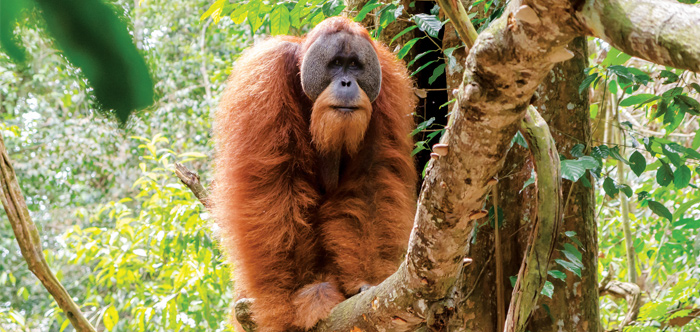
The Sabah Forestry Department is to gazette a forest rich in orang utan, as a fully protected area.
This comes with a sudden change in the ownership of the 101,000ha Forest Management Unit 5 (FMU 5), which also contains 13,000ha of flora and fauna.
State Forests Chief Conservator Datuk Sam Mannan said the area in central Sabah is being classified as a first-class reserve and will become part of the Trusmadi Forest Reserve.
FMU 5, owned by logging and reforestation company Anika Desiran, was purchased by wood products maker Priceworth International for RM260 million in October 2016.
Anika Desiran had been working with conservationists, including WWF Malaysia, over the past three years to create a model example of a conservation economy. The sudden sale of the property took the conservationists by surprise.
Mannan said the forest region had been logged a few times since the 1980s and that the Forestry Department had allowed it to be parceled out under the FMU programme in 1997 because it did not expect orang utan to inhabit such highland areas.
He said a WWF study had since found orang utan in FMU 5, so the high-conservation area within it will now be turned into a first-class reserve.
Once done, the new owner will have to provide a development master plan which must be approved before any kind of work can take place on the land.
Source: The Star, Jan 5, 2017
By GOFB on Monday, December 5th, 2016 in Issue 4 - 2016, Market Briefs No Comments
Summary
Record global palm oil output expected in 2017
Palm oil output in top two producers Indonesia and Malaysia will rise next year and likely surpass the 2015 record, as trees recover from a crop-damaging El Nino weather pattern, said leading industry analyst Dorab Mistry.
The recovery in palm oil output will lead to a “massive rebuilding of stocks” in the oil year ending Sept. 30, 2017, he said at an industry conference in Kuala Lumpur.
“It is too early to forecast Malaysian and Indonesia production for calendar year 2017 but it is more than likely to exceed the record production of 2015.”
The expectations of rising stockpiles could weigh on benchmark palm oil prices, which are up nearly 7% this year on tight supplies after yields were impacted by the lingering effects of last year’s El Nino.
Mistry maintained his global outlook for a strong output recovery of nearly 6.5 million tonnes for the oil year 2016-17 and calendar year 2017.
However, he adjusted his crude palm oil price target, saying it would drop to RM2,200 by end December – Instead of in November as earlier expected – because of recovering production and rising stocks.
“Most of the additional supply will simply replenish stocks,” said Mistry, the director of Indian consumer goods company Godrej International. “Currently I do not expect stocks to become burdensome.”
Crude palm kernel oil prices are also expected to decline from current levels around US$700 per tonne higher than crude palm oil values, to premiums of US$200-250 on slower demand, he said.
Palm kernel oil prices reached a five-year top of RM6,200 per tonne in late August, highest since March 2011, on tight supplies, according to assessment prices by Thomson Reuters.
Price recovery seen
At the same conference, another leading analyst, Thomas Mielke, said global palm oil output will grow by 5.5 million tonnes in the new oil year beginning October,
Global supplies of palm oil will still be tight until March, but production will rebound by 5.7-6.3 million tonnes in calendar year 2017, said Mielke, editor of Hamburg-based newsletter Oil World.
Global output in calendar year 2016 is expected to drop by 3.3 million tonnes to 59.2 million tonnes, he said.
He lowered his 2016 output forecast for top producer Indonesia by 100,000 tonnes to 32.2 million tonnes, and for second-largest producer Malaysia by 300,000 tonnes to 17.8 million tonnes.
He cut his Malaysian output forecast for 2017 by 100,000 tonnes to 20.5 million tonnes, and maintained expectations for Indonesian production next year at 35 million tonnes.
Mielke also said benchmark Malaysian crude palm oil prices are expected to climb to RM2,900-3,000 per tonne in the fourth quarter or in early 2017.
“Palm oil prices are undervalued at the moment,” Mielke said, adding that prices will recover as importing countries start to make more purchases.
Palm oil output, though, will continue to be under pressure due to the lingering effects of El Nino.
“I don’t expect that yields will come back next year … The real increase in yields is going to be in 2018,” Mielke said.
Lauric oils are set to decline in the next 12 months on account of weak demand and recovering production, he noted.
“Once production starts increasing next year, for palm kernel oil in particular and also coconut oil, stocks will increase because demand is poor. Premiums of lauric oil prices versus palm oil is set to narrow in 2017,” he added.
Source: Reuters, Oct 13, 2016
Indonesia imposes mandatory biodiesel blend for non-subsidised diesel
 According to The Jakarta Post, a new regulation issued last week by Indonesia’s Energy and Mineral Resources Ministry makes it mandatory for non-subsidised diesel fuel to also contain a 20% mix of biodiesel. A penalty of Rp 6,000 per litre will be imposed on those who violate the regulation.
According to The Jakarta Post, a new regulation issued last week by Indonesia’s Energy and Mineral Resources Ministry makes it mandatory for non-subsidised diesel fuel to also contain a 20% mix of biodiesel. A penalty of Rp 6,000 per litre will be imposed on those who violate the regulation.
The Biofuels Producers Association said the government still needs to clear up some details in the policy to ensure business certainty.
If implemented and enforced, the move is positive for palm oil prices as the biodiesel demand is then expected to more than double year-on-year from the 2016 demand of 2.6-2.7 million kilolitres to 5.6-6 million kilolitres in 2017 (this is after doubling in 2016 from 2015).
However, execution is key; and Indonesia’s track record, especially on the biodiesel front, has been patchy.
Are the subsidies enough? Yes, says the Indonesia Estate Crop Fund which manages the collection of the US$50 per tonne export levy on palm oil (imposed since July 2015) to subsidise biodiesel.
It forecasts that the levy fund will increase 14% year-on-year in 2017 to US$830 million, as exports should recover in 2017 alongside production.
So far 85% of the subsidy fund has been used to subsidise biodiesel and the surplus is enough to maintain the biodiesel programme until the first quarter of 2017.
Source: Credit Suisse, Oct 26, 2016
India cuts import taxes on CPO, refined vegetable oils

India has cut import taxes on crude palm oil, refined vegetable oils and wheat, as part of efforts to curb food inflation.
Import duty on crude palm oil and refined edible oils has been reduced by five percentage points to 7.5% and 15% respectively, according to the order on a government website. The wheat import tax has been cut to 10% from 25%.
The cut in taxes is expected to increase demand for palm oil from Malaysia and Indonesia, major suppliers that are already enjoying strong demand from China.
India is the world’s biggest edible oil importer. However, domestic crushers believe the cut to the import duty is mistimed.
“We’re a bit disappointed as we’re on the verge of harvesting a new oilseed crop. The reduction in the duty will put pressure on local oilseed prices,” said Atul Chaturvedi, president of industry body Solvent Extractors Association of India.
“The government should have rather raised the differential between the duties of crude and refined oils to support the domestic refining industry.”
Local vegetable oil prices have surged by 20% since July.
Malaysia allocates RM80 mil to oil palm sector in Budget 2017

Malaysia has proposed a RM50 million allocation for scientific research to raise the quality of palm oil products. Another RM30 million is proposed for replanting, reflecting the position of palm oil as a major export commodity.
The allocations were included in the 2017 Budget Speech delivered on Oct 21, but awaits approval by the two chambers of Parliament.
A day earlier, Plantation Industries and Commodities Minister, the Hon. Datuk Seri Mah Siew Keong, said replanting is crucial in order to boost yields. Much of the area under cultivation has mature oil palm trees that are more than 30 years old.
These are too tall for harvesting, and this has caused a fall in productivity, he noted. A replanting grant would encourage growers, especially smallholders, to replace old trees.
He said this year’s palm oil production is expected to be less than 20 million tonnes due to the impact of El Nino.
Last year, the oil palm industry contributed 5.1% to agriculture in terms of gross domestic product. Export earnings stood at RM63.2 billion and accounted for 8.1% of total exports.
Source: Compiled from media reports, Oct 20 & 21, 2016
Argentina postpones soybean export tax cut to 2018

Argentina will not reduce soybean export taxes this year or in 2017 as previously announced, and will instead reduce the tax by 0.5 percentage points per month from January 2018 to December 2019, President Mauricio Macri said on Oct 3.
Shortly after taking office in December, Macri eliminated corn and wheat export taxes as part of his plan to revitalise the country’s massive farm sector.
He also cut the export tax on soybean, the country’s main cash crop, from 35% to 30%. The government had planned further cuts beginning this year.
In September, cabinet chief Marcos Pena told Reuters the government was considering postponing the reduction planned for the end of this year, as recession in Latin America’s third-largest economy ate into fiscal revenue and the government anticipated difficulties meeting planned budget cuts.
Macri has pledged to rein in public spending after the previous government’s generous social programmes contributed to a ballooning deficit. Last month, the government announced a 2017 budget with a fiscal deficit worth 4.2% of GDP, higher than the 3.3% previously planned.
The new soybean tax plan will include a 5 percentage point rebate to producers in the country’s northern provinces – which do not include the main soybean belt – to account for higher transportation costs, Macri said.
The government decided to reduce the tax gradually month by month, to prevent “speculation” amidst concern that farmers would hold off on planting and harvesting until the tax was reduced, Agriculture Minister Ricardo Buryaile said on Oct 3.
“Surely there would have been a significant holding-back of the crop” if the government announced a larger annual tax cut, Buryaile said.
Argentina is the world’s third-largest producer and exporter of soybean after the US and Brazil, according to the US Department of Agriculture.
It is expected to produce 57 million tonnes of soybean and export 10.7 million tonnes in the 2016-17 crop year, which began in October.
The country is also the world’s top exporter of soybean meal and soybean oil. Macri’s government lowered export taxes on those products by 5 points to 27% last year.
Source: Reuters, Oct 4, 2016
Indian palm oil sustainability framework in the works

India, the world’s biggest importer of edible oils, will develop its own sustainability framework for palm oil production considering the domestic ecology, a leading trade body said on Oct 4.
The Solvent Extractors’ Association of India (SEA) said it has tied up with Hong Kong-based Solidaridad to develop a sustainability framework for India, since the local environment and farming practices are different from those of Indonesia and Malaysia, the top two palm oil- producing countries.
Palm oil, used in everything from chocolate to cosmetics, has become one of the world’s fastest expanding crops, but the industry has been facing intense pressure over deforestation and methods used to clear land. That has driven many buyers to demand certification of environmentally-sound behaviour.
India’s import dependency in edible oils has risen to 70% and expansion of oil palm plantations will help reduce imports, BV Mehta, executive director of SEA, told reporters.
India produces just 200,000 tonnes of palm oil from 250,000 ha of plantations and imports nearly 9 million tonnes per annum, according to the SEA.
“There is limitation on expansion of oil palm [planting] in Indonesia and Malaysia, but in India it could be expanded in the southern and north-eastern states,” said Shatadru Chattopadhayay, managing director of Solidaridad Network Asia Ltd.
Source: Reuters, Oct 4, 2016
MOU signed on oil palm research in Nigeria
The Nigerian Institute for Oil Palm Research (NIFOR) and PZWilmar have signed a Memorandum of Understanding (MOU) towards the country’s self-sufficiency in oil palm production.
The MOU was signed in Abuja by Chief Audu Ogbe, the Minister of Agriculture and Rural Development, and Chief Kola Jamodu, the chairman of PZ Cussons Nigeria Plc. It covers capacity building and knowledge sharing for the research institute.
The collaboration will devote attention to developing a Nigerian climate-specific high yield variety through joint development of early maturing, high yielding, drought-tolerant and disease-resistant hybrids.
The scope includes study visit by NIFOR on the biotechnology approach to elite oil palm planting material development in Wilmar facilities in Asia.
The exchange of visits will also explore end-uses of palm oil and palm kernel oil through isolation of nutraceuticals from palm oil and bio-energy development from waste products.
Source: www.vanguardngr.com, Sept 26, 2016
French Parliament rejects palm oil tax proposal
France’s National Assembly has rejected the latest move to introduce an additional levy on palm oil, the widely used food and cosmetics ingredient.
On Oct 27, Green party lawmakers in the lower house of Parliament failed to win support from both the government and main opposition parties for an amendment to the 2017 Budget Bill.
This would have applied an extra tax of 300 Euros per tonne in 2017, then rising progressively to 900 euros in 2020; it would have further increased each year from 2021. The current tax is 104 euros a tonne.
Provincial French daily Ouest-France reported that members of the social affairs committee of Parliament followed the recommendation of Budget Minister Christian Eckert in rejecting the move.
Only a few environmentalist deputies present in the chamber voted for the levy, the paper reported.
However, the French government has said it would propose by February a new scheme to harmonise taxes on vegetable oils and include an exemption for those that are sustainably produced.
Top palm oil-producing countries Indonesia and Malaysia have lobbied against such tax increases.
Source: Compiled from Reuters, Oct 27 & www.just-food.com, Oct 28, 2016
Edible oil producer in India gets more land to plant oil palm
Edible oil maker Ruchi Soya Industries has signed an agreement with the Arunachal Pradesh state government in India, for oil palm planting on additional land to boost domestic production.
The agreement gives the company permission for oil palm development on 25,000 ha in the districts of West Siang, East Kamang, Lower Subansri and Papumpare. Last year, it had obtained access to 20,000 ha in the East Siang district.
“We are pleased by the efforts put by Ruchi Soya Industries for oil palm development in East Siang district through the timely set-up of a state-of-the-art nursery […],” said state Agriculture Secretary Talem Tapok.
Ruchi Soya founder and MD Dinesh Shahra said the company has always strived for the betterment of Indian farmers and to help them achieve higher yields by providing the right technology and assistance.
The company is involved in palm oil processing with 0.52 million tonnes capacity per annum. It has a turnover of US$4 billion, with its brands including Nutrela, Mahakosh, Sunrich, Ruchi Star and Ruchi Gold.
Source: Press Trust of India, Oct 6, 2016
China’s 2016-17 soybean imports to hit record level
 China’s soybean imports are forecast to hit a record high of 86 million tonnes in the 2016-17 marketing year that begins Oct 1, up from an estimated 83 million tonnes in 2015-16, according to a GAIN report filed on Aug 30 by the Foreign Agricultural Service of the US Department of Agriculture (USDA).
China’s soybean imports are forecast to hit a record high of 86 million tonnes in the 2016-17 marketing year that begins Oct 1, up from an estimated 83 million tonnes in 2015-16, according to a GAIN report filed on Aug 30 by the Foreign Agricultural Service of the US Department of Agriculture (USDA).
The forecast was slightly lower than the official USDA data forecast of 87 million tonnes. Increased Chinese demand for industry feed and protein meal as a result of a recovery in swine production and steady growth in the poultry sector was seen as the driver for the increase in soybean imports.
“China’s recent sale of stored oilseed and oilseed product reserves (soybean and rapeseed oil) is expected to absorb the market share for food soybean and vegetable oils,” the GAIN report said.
“However, forecast lower imports of [distillers’ dried grains with solubles] as a result of China’s anti-dumping investigation may increase demand for soybean meal and thus support growth in soybean imports.”
Domestic production of soybean is set to grow during the same period as a result of increases in the planted area, reflecting government efforts to restructure the crop mix and better yields.
The China Agricultural Outlook Committee (affiliated to the Agriculture Ministry) forecast 12.86 million tonnes of soybean in 2016-17 on higher yields and favourable weather, up from the previous projection of 12.76 million tonnes. The China National Grain and Oilseed Information Centre has issued a forecast of 12.6 million tonnes for 2016-17, up 8.6% from the previous year.
In addition, an independent oilseed information source predicted China’s domestic production of soybean in 2016-17 will total 14.1 million tonnes, up 3.67 million tonnes from the 10.43 million tonnes estimated in 2015-16.
Forecast lower rapeseed and cotton seed production in China in 2016-17 was expected to increase soybean imports for protein meal. The GAIN report forecast 2016-17 imports of rapeseed to China at 3.9 tonnes, above the USDA official forecast of 3.8 tonnes.
Peanut imports in 2016-17 were estimated to decline to 400,000 tonnes, down from 550,000 tonnes in 2015-16 as a result of strong domestic production. The expected decline reflected strong gains in domestic acreage coupled with a continuing depreciation in the value of the Chinese currency.
The GAIN report also indicated a decline to 8.3 million tonnes in Chinese cotton seed production in 2016-17, partly as a result of an expected decline of 10% in acreage, and down from the estimated 8.9 million tonnes in the previous marketing year.
China’s imports of vegetable oils are expected to be flat in 2016-17 after declining in 2015-16, as a result of the high crush of oilseeds and sales of domestic oilseed product reserves. The forecast for 2016-17 imports:
“Weaker palm oil imports are due to a combination of factors, resumption of export duty in exporting countries; weak demand for palm oil; an adequate supply of other vegetable oils; and depreciation of the Chinese currency,” the report said.
Source: World-Grain.com, Sept 2, 2016
Better returns for Malaysian oil palm smallholders

Smallholders in Malaysia can sell fresh fruit bunches (FFB) at RM50 per tonne higher (by 13%) to the Oil Palm Planters Cooperatives, compared to selling to oil palm fruit traders.
Plantation Industries and Commodities Minister, the Hon. Datuk Seri Mah Siew Keong, said the involvement of cooperatives in ensuring the production of quality FFB and palm oil direct to mills, has provided better returns for smallholders.
As at September, 33 cooperatives had been established – 13 in the peninsula, 11 in Sarawak and nine in Sabah. Of these, 20 have started direct integrated FFB sales to mills.
“Under the 11th Malaysia Plan, the government allocated RM200,000 to each cooperative to build FFB weighing stations.
“The Malaysian Palm Oil Board (MPOB) is working with Agro Bank for overdraft facilities for cooperatives, for revolving capital to undertake the business of the sales and purchase of FFB.”
He said this in a speech delivered at the opening of the Oil Palm Smallholders National Conference in Ipoh on Oct 11. The text was read by MPOB chairman Datuk Wira Ahmad Hamzah.
The area under oil palm cultivation has reached 5.67 million ha, covering more than 70% of the country’s agricultural land.
Of this area, 40% is managed by individual smallholders and those under the patronage of federal and state government agencies.
Source: Bernama, Oct 12, 2016
By GOFB on Sunday, October 2nd, 2016 in Issue 3 - 2016, Market Briefs No Comments
Summary
KL, Jakarta to appoint palm oil ‘envoy’
Malaysia and Indonesia plan to appoint an ‘Ambassador of Palm Oil’ to promote the benefits of consuming palm oil products in the international market.
Datuk Seri Mah Siew Keong, the Malaysian Minister of Plantation Industries and Commodities, said misrepresentations spread by the anti-palm oil lobby have led to non-tariff barriers in major importing countries.
“These include the ‘No palm oil’ label [on food products] and proposals to impose a high import tax on palm oil products. This is a form of discrimination to us,” he said.
Mah said this after co-chairing the Ministerial Meeting of the Council of Palm Oil Producing Countries (CPOPC) with Indonesia’s Coordinating Minister of Maritime and Resources, Luhut Binsar Panjaitan, in Putrajaya on Aug 30.
Luhut Binsar said the ambassador must be a person who is influential and that some names are in hand, but that these will have to be discussed with Datuk Seri Mah.
He said the two countries have also agreed to cooperate in promoting the use of biodiesel in other countries, especially China.
“China is looking to overcome environmental problems and we are trying to convince [its] government that B5 or B10 biodiesel can bring [about a] good impact,” he said, referencing the blends of 5-10% palm methyl ester and 90-95% regular diesel.
Datuk Seri Mah also said both countries have agreed to contribute US$5 million each initially to operate the CPOPC secretariat.
The secretariat, he said, will organise ministerial missions to major importing countries, including those in the European Union, to address current concerns about palm oil.
Palm Oil Refiners Association of Malaysia chief executive Mohammad Jaaffar Ahmad has been appointed deputy executive director of the CPOPC.
“He will represent Malaysia […]. We will appoint the other two representatives in a couple of weeks. They will be tasked with taking care of smallholders’ interests and global palm oil stock management,” Datuk Seri Mah said.
Earlier this month, the Indonesian government had appointed Benny Wachyudi as the CPOPC executive director. The secretariat structure is such that four directors will report to the executive director and his deputy – two from Indonesia and two from Malaysia.
Indonesia has appointed Fadhil Hasan the CPOPC director in charge of standards and sustainably issues. His duties are mainly to harmonise the certification criteria of the Indonesian Sustainable Palm Oil and Malaysian Sustainable Palm Oil standards.
Eight other palm oil producers – Thailand, Nigeria, Colombia, Papua New Guinea, Ivory Coast, Honduras, Guatemala and Brazil – have expressed interest in joining the CPOPC to date.
Sources: Compiled from reports by Bernama, Aug 31, 2016, & New Straits Times, Aug 30, 2016
Global oil palm acreage could double without damaging forests
The area covered by oil palm plantations worldwide could double without damaging protected areas or sensitive forests, according to recent research.
Researchers from the Austria-based International Institute for Applied Systems Analysis (IIASA) studied satellite maps from Southeast Asia, Africa and Latin America to determine where the crop used to make vegetable oils and other consumer products could be expanded sustainably.

The findings follow criticism by campaign groups who say the expansion of oil palm plantations has destroyed rainforests and displaced native people from ancestral lands.
More than 18 million ha are covered by oil palm plantations, up from 6 million ha in 1990, IIASA said.
Expansion of the crop, which accounts for about 30% of all vegetable oil used worldwide, has been concentrated in biodiversity-rich Malaysia and Indonesia.
The industry could grow sustainably if the right policies are put in place, the researchers said.
“Currently, ‘no-deforestation’ pledges are being formulated and eventually implemented on different scales – from palm oil traders to provincial governments,” IIASA researcher Johannes Pirker told the Thomson Reuters Foundation.
“As a co-benefit of these initiatives, improved land-use planning and tenure clarification, smallholder inclusion and improved production practices might come about, which will ultimately also benefit the land rights of traditional communities.”
Satellite data shows an area of up about 19 million ha on which the industry could grow without damaging forests that are particularly valuable for biodiversity or storing carbon as means of combating climate change, IIASA said.
Globally, an estimated three million small farmers work in the oil palm business and this could rise above seven million if the industry is expanded sustainably, it added.
Red palm oil reduces Vitamin A deficiency in China project
‘Carbon neutral’ urban centres for Malaysia
Malaysia hopes to have a city or township with zero carbon emissions in all states by 2026.
To date, Malacca City and Iskandar Malaysia in Johor have been earmarked to become the country’s first ‘green technology’ cities by 2020, said Natural Resources and Environment Minister Datuk Seri Dr Wan Junaidi Tuanku Jaafar.
Malaysia had promised to reduce its overall greenhouse gas emission intensity by 45% by 2030, during the United Nations Climate Change Conference (UNCCC) in Copenhagen in 2009.
Prime Minister Datuk Seri Najib Abdul Razak had reiterated the stand at last December’s Paris conference.
Datuk Seri Wan Junaidi said the federal government is scouting for potential cities or new townships where it can implement a Low-Carbon Cities Framework (LCCF) – currently being developed in Malacca and Johor – in a bid to drive down CO2 emissions.
The LCCF is a town planner for local governments and developers to calculate the CO2 emission baseline of cities and how to reduce this in four key areas: transportation, environmental quality, buildings and energy, and waste and water management.
Malaysia’s report to the UNCCC in 2011 put the country’s net total emission of CO2 at 27.28 million tonnes. The energy sector accounted for 76% of this, while the waste sector contributed 12%.
Datuk Seri Wan Junaidi said Malaysia had reduced an estimated 8.57 million tonnes of CO2 emission in these sectors by cutting down processes that result in greenhouse gases, and by planting 13 million new trees since 2011.
Source: New Straits Times, July 26, 2016
Malaysia committed to B10 biodiesel policy
The Plantation Industries and Commodities Ministry is working to implement the use of B10 biodiesel in Malaysia this year.
Its Minister, Datuk Seri Mah Siew Keong, said discussions are going on with various parties and that the ministry has received a lot of feedback.
“We have met car-makers [and] petrol station operators, and I think we will have a few more meetings,” he told reporters, adding that their concerns would be studied and addressed.
Earlier reports had said that the implementation of B10 biodiesel (blending of 10% palm methyl ester with 90% petroleum diesel) had been delayed due to inadequate data.
The new standard will raise the minimum bio-content of biodiesel from the current 7%, taking up more palm oil supplies and supporting local prices.
Blending to the new standards is expected to consume 709,000 tonnes of palm oil annually versus estimates of 500,000 tonnes under the current biodiesel mandate.

“The implementation of both the B10 and B7 programme requires coordination and cooperation from all petroleum companies, including Petronas, Shell, Chevron, Petron and BHP,” said the ministry in an e-mail reply to Reuters.
State-owned Petronas, Royal Dutch Shell, Chevron, Petron and BHP are responsible for blending diesel with PME at 35 blending depots throughout Malaysia, according to the ministry.
Current facilities at the depots are able to handle blending of up to 10%, the ministry said, as the infrastructure had been designed to take into account the upgrading of the biodiesel mandate.
“The petroleum companies only need to reset the blending ratios to B10 and B7 respectively,” the statement said.
Construction of the blending facilities was funded by the government through the Malaysian Palm Oil Board.
Palm oil traders, plantation companies and analysts had earlier questioned the feasibility of the government’s B10 programme, citing low crude oil prices and weak implementation policies as barriers to the mandate’s effectiveness.
Malaysia has 18 biodiesel plants in operation with 2.3 million tonnes in annual capacity, the ministry said.
The biodiesel programme will help stabilise palm oil prices, and the government will as well look for other strategies to support prices, such as accelerating re-planting activities, the ministry said.
Sources: Compiled from Bernama & Reuters reports, July 26, 2016
CPO average price forecast for 2016

The crude palm oil price is seen averaging RM2,678 per tonne this year, up nearly 18% from last year. This is due to higher demand from top consumer India and replenishment of stocks by China, according to the Malaysian Palm Oil Council (MPOC).
Benchmark palm oil prices on the Bursa Malaysia Derivatives Exchange had surged 11.3% up to Aug 22, on the back of tight supplies and improving export data.
“In 2016, palm oil prices will average at RM2,678 per tonne, stabilising in a range between a low of RM2,162 and a high of RM3,195,” said Tan Sri Dr Yusof Basiron, the MPOC chief executive, in remarks posted online for a palm oil seminar.
The forecast price, up from the year-to-date average of RM2,528, is on the back of strong demand from the world’s two largest consumers, he said.
India will maintain its position as the world’s largest consumer and importer of palm oil, he said, while China is expected to import more oils and fats for the rest of the year.
“The utilisation of the high carryover stocks in China caused it to import less oils and fats especially in the first half of 2016, but imports will be increased to replenish stocks in the second half of 2016,” said [Tan Sri] Yusof.
Palm oil shipments from Malaysia, the world’s second-largest producer after Indonesia, rose 26.5% in the first 20 days of August from the same period in July on improving exports to India.
[Tan Sri] Yusof also pegged Malaysia’s output at 19.1 million tonnes this year and Indonesian production at 32.8 million tonnes.
“[Malaysian output] from August onwards is expected to be higher as the dryness associated with effects of El Nino in early 2016 [will] no longer hamper production,” he said.
Rapidly rising palm oil prices, however, could narrow the spread with rival soybean oil, reducing its competitiveness.
The share of palm oil in India’s edible oil imports is already seen falling to a record low in this marketing year, as the price rally slashes its discount versus soybean oil.
The palm oil discount to soybean oil is about US$110 (RM441), compared to a spread of US$140 a year ago.
Source: Reuters, Aug 22, 2016
Technique found to double oil palm yield on peatland
Indonesia’s new moratorium on oil palm concessions
Indonesia plans to issue a five-year moratorium on new oil palm plantation concessions through a presidential instruction. This is in line with President Joko Widodo’s priorities for a healthy and sustainable environment.
It also follows international criticism of weak environmental policies that had heightened due to devastating fires in Kalimantan and Sumatra, as well as the spread of toxic haze to other parts of Southeast Asia between June and October 2015.
San Afri Awang, Director-General of Spatial Forestry Planning at the Environment Ministry, said the moratorium will include plantation concessions that are not used in accordance with the prevailing stipulations; plantation concessions transferred to a new owner; and plantation concessions that include productive forested areas.
Indonesia is the world’s largest producer and exporter of crude palm oil (CPO); therefore, the industry is a key foreign exchange earner and provides employment to millions of Indonesians.
President Joko had previously emphasised that he does not want to weaken palm oil output by curtailing the establishment of plantations. Instead, he wants to boost productivity of existing plantations by using more efficient farming techniques and seeds, as well as the replanting of new trees (rejuvenation).

The planned moratorium on new palm oil concessions is one of a series of such moves. In May 2011, a two-year moratorium was placed on the issuance of new permits to clear rainforests and peatland. This has been extended twice and is still in effect.
Chief Economics Minister Darmin Nasution said the government will make use of its ‘Single Map Policy’ – a single reference map that harmonises all maps from different state agencies to a scale of 1:50,000 – to prevent overlapping land concessions. By taking this map as a point of reference, it will be known whether new plantations are added over the next five years.
A side-effect of the five-year moratorium is that existing palm oil plantations will become more valuable.
Meanwhile, a recent study published in Scientific Reports says the fires in Sumatra and Kalimantan in late 2015 had released about 11.3 million tonnes of carbon each day (exceeding the 8.9 million tonnes of daily carbon emissions in the European Union).
More than 100,000 man-made fires destroyed 2.6 million ha of land within a five-month period. This was among the worst natural disasters ever recorded. According to the World Bank, Indonesia lost IDR 221 trillion (about US$16 billion) or 1.9% of the GDP.
Traditionally, Indonesian farmers use slash-and-burn practices to clear forests for the expansion of oil palm, as well as pulp and paper plantations. Although such practices are illegal, weak law enforcement has enabled them to continue.
Source: www.indonesia-investments.com, July 16 & 19, 2016
By GOFB on Friday, July 29th, 2016 in Issue 2 - 2016, Market Briefs No Comments
Summary
Weather events force fall in global palm oil output
Global palm oil production could fall by over 2 million tonnes this year because of the drought caused by El Nino, while further declines may occur due to heavy rains from La Nina later this year, a leading industry analyst said.
“El Nino will pull world 2016 CPO output down by over 2 million tonnes. A Q3 to Q4 La Nina, with heavy rains, would reduce 2016 output by a further 0.4 million tonnes,” said James Fry, Chairman of commodities consultancy LMC International, at an industry conference in Kuala Lumpur on March 9.
El Nino brings scorching heat across Southeast Asia, lowering oil palm fruit yields in top growers Indonesia and Malaysia, which produce about 85% of global palm oil. La Nina typically causes more rain in both countries.
Fry had earlier forecast Southeast Asian production to fall by 4 million tonnes in 2016 on static output in Indonesia, while Malaysia will record a decline as a result of El Nino, which Fry said is the strongest since 1997.
He also forecast CPO prices to climb to RM2,750 per tonne by June on a Brent crude oil forecast of US$35 a barrel, and hit RM2,900 if oil reaches US$40.
“Free-on-board (FOB) CPO will be US$700 by June… As output picks up, the July to December average price will fall back to US$625 FOB and the price will fall further as 2017 unfolds if oil prices are at US$35,” said Fry.
FOB CPO prices would reach US$735 a tonne on US$40 a barrel oil while palm kernel oil will average US$425-450 above CPO in 2016, supported by weak output of oil palm and coconut oil, he said.
Dorab Mistry, a Singapore-based director with Indian consumer goods company Godrej International, said Malaysian palm oil output is expected to decline by a million tonnes for the first half of the 2016 calendar year.
At the 13th International Oils & Oilseeds Conference in Beijing in March, he noted that Malaysian production for the first two months of the year was running more than 100,000 tonnes lower than the corresponding period a year ago. The deficit was expected to expand to at least 350,000 tonnes by the end of March.
“From July we can expect some recovery. However, we have had severe dry weather in Sabah since the second half of January and that is likely to continue until the first half of April. Sabah palm oil production will suffer an extended impact around September 2016.”
Mistry maintained his estimate for Indonesian palm oil production to fall by 1.2 million tonnes and that prices would reach RM3,000 this year.
Indonesian output was forecast to fall in February to 2.3 million tonnes from 2.44 million tonnes a month earlier due to drought and forest fires, its lowest levels in a year. Its annual output is expected to fall to 32.1 million tonnes this year, the first decline since 1998, said the Indonesian Palm Oil Association.
Profits ahead for Southeast Asian palm oil firms
Palm oil inventories are set to drop further as El Nino chips away at yields in Southeast Asia, boosting a rally in prices and helping producers rake in more profits for the first time since 2011.
Palm oil prices have risen almost 9% over two months. Analysts expect the trend to sustain this year as El Nino cuts global output by 2-3 million tonnes, exports pick up and top producers Indonesia and Malaysia mop up more of the oil to meet higher 2016 biodiesel mandates.
Malaysian inventories hit an eight-month low of 2.17 million tonnes in February and, according to MIDF Research, could slump to 1.5 million tonnes later this year – the lowest since early 2011.
Brokerage UOB Kay Hian says there is a high possibility of the world’s biggest buyers, India and China, replenishing their palm oil supplies after low imports in February, tightening stockpiles further. Demand is also likely to get a boost before the Muslim holy month of Ramadan, which begins in June and when consumption of edible oils rises.
Malaysian exports had already picked up 10.5% month-on-month in the first half of March, a cargo surveyor data shows.
This combination of factors could not have come at a more opportune time for Southeast Asian palm oil producing firms, which have been struggling with declining cumulative profits for the past four years with prices down around 22%.
Twelve of the biggest such companies, including IOI Corp and Golden Agri-Resources Ltd, are expected to report combined profit growth of 20% in 2016, according to Thomson Reuters StarMine Mean Estimates.
The challenge for them will lie in their ability to control costs linked to lower output and a 5% tax on April CPO exports from Malaysia after 11 months of duty-free sales.
“It is possible that profits will improve as a result of higher prices but we have to bear in mind that profits will be held down by increasing costs,” said Roy Lim, group plantations director of Kuala Lumpur Kepong Bhd.
Malaysian smallholders reject proposed French palm oil tax
France’s proposal to impose an additional tax on palm oil will harm the lives and livelihoods of over 300,000 small farmers in Malaysia for whom oil palm cultivation is an essential lifeline.
“This tax is unfair, unjustified and discriminatory towards millions of small farmers worldwide. In Malaysia, today, more than one million people would be affected by this damaging new tax,” said Dato’ Haji Aliasak Haji Ambia, President of the National Association of Smallholders Malaysia (NASH).
“Palm oil is a lifeline for smallholders: it enables them to provide prosperity for their families and communities, lifting them out of poverty,” he said in a press statement.
“The French Government claims to be a friend of the developing world, but this new tax will hurt millions of small farmers and local communities who depend on palm oil. The proposed tax in the French National Assembly is a tax on poor people and a tax on small farmers.”
NASH jointly operates the ‘Human Faces of Palm Oil’ project along with the Sarawak Land Consolidation and Rehabilitation Authority and the Malaysian Palm Oil Council.
The social, economic and environmental benefits of palm oil have been recognised across the developing world, with Malaysia as a global model for smallholder development. Some 40% of its oil palm acreage is owned or managed by small farmers.
Palm oil is one of the most successful poverty alleviation tools in Malaysia, having helped to bring down the poverty rate from 50% after Independence, to less than 5% today.
A step closer to free trade between Malaysia and EU
The Malaysia and EU Partnership and Cooperation Agreement (MEUPCA), initialled on April 6, has cleared the way for a Free Trade Agreement to be negotiated between the two parties.
Initialling the agreement for Malaysia was chief negotiator Datuk Ilango Karuppannan, with Ranieri Sabatucci representing the EU.
Malaysian Deputy Foreign Minister, the Hon. Datuk Seri Reezal Merican Naina Merican., witnessed the ceremony in Putrajaya.
The MEUPCA encompasses 60 articles covering a broad range of economic and non-economic sectors in Malaysia and the EU.
“This will serve as a catalyst to strengthen bilateral relations between Malaysia and enhance cooperation in wide-ranging areas including political relations, trade and investment, energy, transport, agriculture, finance, maritime affairs and other areas through dialogue and exchanges of information,” said Ilango.
“The MEUPCA is also an umbrella agreement that will provide the impetus in concluding other bilateral agreements.”
Colombia zero-rates palm oil imports for six months
Colombia has offered a temporary tariff reduction for palm oil and derived products. It has published a decree authorising imports of palm oil at zero rate from the previous 40%, from Feb 29 to Aug 29, 2016, said the Malaysia External Trade Development Corporation (MATRADE).
The reduction applies to palm oil-related categories such as CPO, palm oil and its fractions – whether or not refined, but not chemically modified; crude palm kernel oil; vegetable oils and fats (hydrogenated and re-esterified); margarine (excluding Liquid Margarine); other mixtures or preparations of vegetable oils and fats; and vegetable and animal oils and fats.
Oleochemical products such as stearic acid, oleic acid, and other monocarboxylic industrial fatty acids are included in the measure, MATRADE said in a statement.
Its Trade Commissioner in Miami, Mohd Nadzri Saadon, said this represents a good business opportunity for palm oil and oleochemical manufacturers to make inroads into the Colombian market, provided they can come up with a competitive landed price.
“Based on our interactions with Colombian importers, the sharp depreciation of the Colombian peso against the US Dollar and the fact that Ecuador, the main supplier of palm oil to the market has adopted the US Dollar as its legal tender, has hurt the country’s importers by making imports more expensive,” he added.
Colombian trade statistics show that imports of palm-based products in 2015 were valued at US$129 million. Malaysia’s share is valued at US$917,000 (0.71%) of the import market.
By GOFB on Sunday, March 27th, 2016 in Issue 1 - 2016, Market Briefs No Comments
Summary
Palm oil producers against France’s new tax proposal
Malaysia and Indonesia have voiced protest against France’s plan to impose a progressive tax on palm oil with effect from next year.
On Jan 21, the French Senate approved an amendment to raise the import tax on palm oil from €100 per tonne to €300 from 2017; to €500 per tonne from 2018; to €700 per tonne from 2019; and €900 per tonne in 2020.
Malaysian Plantation Industries and Commodities Minister Datuk Amar Douglas Uggah Embas said the tax is unreasonable and is clearly intended to kill the palm oil industry.
He said this at a joint press conference with Rizal Ramli, Indonesia’s Coordinating Minister of Maritime and Resources, after a meeting of the Council of Palm Oil Producing Countries in Jakarta on Feb 4.
Uggah said Malaysia and Indonesia understand that the action is possibly to safeguard the French vegetable oil industry that is competing with palm oil, but noted that the tax would violate World Trade Organisation rules.
He said the move would affect millions of Indonesians and Malaysians working or involved in the industry.
Rizal said the implementation of an additional tax makes no sense and that France has no strong reason to do so. He also said this could hurt bilateral relations.
“The tax increase is malicious and intends to kill the palm oil industry in both countries as the selling price of palm oil is only €550 per tonne [….],” he said.
“Although France is a small market for Malaysia and Indonesia, the country’s move to increase the palm oil import tax could influence other countries to follow.”
Malaysia committed to B10 biodiesel
Malaysia remains committed to its plan to raise its biodiesel mandate to 10% despite low oil prices, said Plantation Industries and Commodities Minister Datuk Amar Douglas Uggah Embas.
He said the government is in the final stages of consultation with stakeholders on the B10 programme, which mandates a minimum 10% of bio content in diesel, and will submit a cabinet paper on this by the end of February.
“Yes, impacted, but price is not our only consideration,” the minister said when asked if low oil prices would result in a change of plans. “There are various considerations and the sum of that will guide the government’s biodiesel utilisation.”
Oil prices slumped to their lowest since 2003 in the week of Jan 20 as the market anticipated a rise in Iranian exports after the lifting of sanctions against Teheran.
Indonesia bans permits for peatland cultivation
New permits for cultivation on peatland areas should no longer be issued in Indonesia, in order to prevent fires that are difficult to extinguish.
President Joko Widodo said this at a National Coordination Meeting on Forest and Land Fire Prevention on Jan 18.
He also ordered the environment and forestry minister to take over the management of burnt peatlands; and instructed the newly established Peatland Restoration Agency (BRG) to work out an immediate draft action plan on caring for burnt peatland areas.
“I have explained to heads of state that what was burned was not forest areas, but peatland; [these] fires, if not immediately put out, could reach down to three to four metres below the surface and [are] very difficult to extinguish,” he said, referencing the seriousness of the problem.
The president stressed that efforts to prevent and put out land and forest fires should be improved this year. Fires should not be allowed to grow before efforts are made to extinguish them.
“There is no choice other than improving the handling of the ecosystem,” he said.
He had earlier said that Indonesia is serious about handling the damage to peatland, as evidenced by the establishment of the BGR on Jan 13 under presidential regulation Number 1 of 2016.
“We can convince the international community that we are serious, very serious, about handling the damage to the peatland,” the president said.
“Although these (land and forest fires) have happened repeatedly over the past 18 years, they serve as a valuable lesson.”
Malaysia-EU trade agreement expected soon
After a five-year process, negotiations for a Malaysia-European Union (EU) Free Trade Agreement (FTA) are expected to be concluded within the first quarter of the year. The agreement is Malaysia’s latest bilateral initiative with the EU.
Malaysia’s International Trade and Industry Minister II Datuk Seri Ong Ka Chuan said the FTA would boost the economy, as exports to countries like Germany and Italy would be free of taxes.
“We will actively pursue this negotiation and close it as soon as possible, especially since Vietnam has just closed a deal with the EU. We must not lose the [competitive] edge as Malaysia will benefit greatly from this bilateral trade,” he said.
Along with tax-free exports to, and the import of goods from, the EU – a 500 million-strong market of 28 countries – Ong said he expects increased foreign investment when the agreement is signed. More than 80 types of goods are currently being taxed.
He further noted the need to “activate the e-commerce industry beyond our borders, so traders and customers can deal with their goods freely once the FTA is signed, instead of having to go through the Customs Department and its taxation [procedures]”.
The lack of international e-commerce trade has meant that the Gross Domestic Product value of Malaysia is only 5.8% compared to the US (30%), China (20%), Singapore (15-20%) and Taiwan (14%), he said.
Malaysia and EU had commenced discussions on the FTA in 2010. These were put on hold last year as both sides were still studying the guidelines and limitations surrounding the agreement.
India cuts palm oil imports
Palm oil purchases by India fell in December 2015, the first decline during the year, as record stockpiles in the world’s largest buyer prompted traders and refiners to slow shipments.
Imports dropped 7.9% to 770,000 tonnes from a year earlier, according to the median of estimates from five processors and brokers compiled by Bloomberg. Total vegetable oil purchases, including soybean oil climbed 21% to 1.38 million tonnes, the survey shows.
Stockpiles in India had surged to an all-time high in December after traders boosted imports on concern that the first back-to-back shortfall in monsoon rain in three decades will shrink the oilseed harvest and worsen a cooking oil deficit.
The country, which depends on overseas supplies to meet 70% of its needs, will still import 1.3-1.5 million tonnes of vegetable oil each month in 2016, according to Sunvin Group, a Mumbai-based broker and consultant for the oil and oilseed industry.
“Higher stocks at ports and in the pipeline by the end of November [2015] kept palm oil imports lower,” said Nagaraj Meda, managing director of Hyderabad-based TransGraph Consulting.
Vegetable oil stockpiles jumped to a record 2.43 million tonnes on Dec 1, compared with a monthly requirement of 1.6 million tonnes, according to the Solvent Extractors’ Association. The government should increase the tax on imports of refined cooking oils to 27.5% from 20% now to curb cheap supplies and protect domestic oilseed crushers, the association said on Dec 21, 2015.
India buys palm oil from Indonesia and Malaysia and soybean oil from the US, Brazil and Argentina. Vegetable oil imports may climb to a record for a second year, increasing to 15.2 million tonnes in the 12 months that began Nov 1, 2015, from 14.6 million tonnes, Sandeep Bajoria, chief executive officer of Sunvin Group, said in December.
“Higher imports will continue because of low production and as farmers are also not selling their crop,” said Ashok Sethia, a director at Sethia Oils Ltd.
India’s monsoon-sown oilseed harvest is seen declining 11% to 12.6 million tonnes in 2016 from a year earlier, the Central Organisation for Oil Industry and Trade said last October. Soybean oil imports probably climbed more than five-fold to 490,000 tonnes in December from a year earlier; sunflower oil purchases dropped 34% to 100,000 tonnes; and canola oil purchases were 25,000 tonnes, the survey showed.
By gofb-adm on Thursday, October 8th, 2015 in Market Briefs No Comments
Summary
French Minister’s ‘thousand apologies’ for Nutella gaffe
To millions, Nutella is a delicious hazelnut and chocolate-flavoured spread, but to France’s Ecology, Sustainable Development and Energy Minister, it’s a driver of global warming and environmental destruction.
“We have to replant a lot of trees because there is massive deforestation that also leads to global warming. We should stop eating Nutella, for example, because it’s made with palm oil,” Segolene Royal said on French television last week.
“Oil palms have replaced trees, and therefore caused considerable damage to the environment,” she said, adding that Nutella should use “other ingredients”.
Royal’s comments unleashed a media firestorm. But in just days, her attempts to label Nutella as environmentally unfriendly had chalked up an epic fail.
Ferrero, the Italian company that makes Nutella, quickly issued a statement claiming its palm oil is “100% certified as sustainable according to the Roundtable on Sustainable Palm Oil”.
“Ferrero sources approximately 170,000 tonnes of palm oil out of a worldwide production of 60 million tonnes, meaning that Ferrero’s impact on the palm oil supply chain represents less than 0.3%,” the company said in its statement.
“The company has made efforts to produce palm oil sustainably. For instance, it launched a Palm Oil Charter in 2013 in order to address the causes of deforestation. The charter committed the company to sourcing palm oil responsibly, while protecting animals, the environment and the rights of workers.”
Even environmentalists would not back Royal’s calls to stop eating Nutella. Activists said boycotts are not the answer to stopping palm oil production and that Nutella is one of the more ecologically responsible companies on this issue.
“… simply boycotting products containing palm oil – or any other commodity linked to deforestation – will not stop the destruction,” Greenpeace International said in a statement.
“And as far as consumer companies go, Ferrero, the maker of Nutella, is actually one of the more progressive consumer-facing companies when it comes to palm oil sourcing. Responding to the demands of their customers, Ferrero was one of the first companies to announce a policy to end the use of deforestation palm oil.”
Italian politicians reacted by publicly showing support for Nutella. The New York Post reported that “Agnese Renzi, the wife of Italy’s prime minister, was shown by Italian media ordering a pancake filled with the spread for her daughter, Ester”.
“Italian Environment Minister Gian Luca Galletti tweeted he would eat bread and Nutella for dinner,” it also reported. Royal had no evidence to back her claim. She issued an apology just two days after her comments.
“A thousand apologies for the row over Nutella,” she tweeted. “Okay to showcase progress.”
Source: The Daily Caller, June 22, 2015
Joint-venture company to bottle palm oil for Vietnam
Vietnamese food firm Kinh Do, along with Indo-Trans Logistics Corporation (ITL) and Malaysia’s Felda Global Ventures Holdings Bhd (FGV), have signed a memorandum of understanding to establish a joint-venture company to bottle palm oil for the Vietnamese market.
Kinh Do will contribute 45% to capital, while ITL and the Malaysian investor will collectively own 55%. The company is expected to be launched within the next six months.
With its experience of operating in the palm oil refining industry, FGV – the world’s largest producer of crude palm oil – will assist the new company by guaranteeing high quality products, Kinh Do said in a statement.
ITL will provide integrated solutions for local logistics, and maritime and aviation transport management.
“Based on combining the strengths of three corporations, the joint-venture company will become a strong, successful bottled oil firm in the market,” said Tran Le Nguyen, chief executive of Kinh Do.
The new company will not build a new plant during its inception. Instead, it will capitalise on available infrastructure to implement production with raw materials imported from Malaysia by FGV and ITL.
Kinh Do, headquartered in Ho Chi Minh City, entered the cooking oil business last year after acquiring some 24% of the Vietnam Vegetable Oil Industry Corporation (Vocarimex) during its initial public offer in July.
It has plans to consolidate its presence in Vocarimex by investing another VND530 billion (US$24.5 million) in the newly equitised state firm, increasing the holding to 51%.
Beyond the oil segment, Kinh Do has also formed a US$30 million instant food joint venture with Taiwan-invested Saigon Ve Wong Co Ltd, in which it owns a 49% stake.
Source: Dealstreet Asia, June 22, 2015
US unlikely to ditch the Renewable Fuel Standard
Legislation has been introduced in the US Congress to eliminate the Renewable Fuel Standard (RFS), but it has no chance at enactment. However, more notable is the concession in Washington by some policy supporters of biofuels that the RFS is a flawed approach.
Conventional biofuel has hit a blend wall at the same time that advanced biofuel is constrained by a technology wall. The alternative suggestion is a large enough production tax credit for advanced biofuel and a tax on gasoline.
One expert warns that the public is less motivated on biofuels due to climate change than the fear of dependence on foreign oil.
Source: Ag Perspectives, June 17, 2015
Indonesia to get US$5mil for climate-change work
US Agency for International Development mission director Andrew Sisson has signed an agreement to award US$5 million to the Indonesia Climate Change Trust Fund (ICCTF). This will be used to fund Indonesian NGOs’ climate change programmes.
“From changing weather patterns that affect food production, to rising sea levels that increase the risk of coastal flooding, Indonesia faces a wide range of climate change-related threats,” Sisson said as he signed the agreement with National Development Planning Deputy Minister Endah Murniningtyas, who is also chairs the ICCTF Board of Trustees.
“The US is proud to support the ICCTF and continue our history of partnering with the Indonesian government to tackle important global challenges,” said Sisson.
He said climate change is a shared global priority that requires the action of governments, private companies, NGOs and citizens.
“It’s impressive that this fund involves all these stakeholders in Indonesia,” Sisson said.
ICCTF pools and coordinates funds from various sources to support and finance climate change programmes and policies. It is one of only two nationally managed trust funds in the world dedicated to fighting climate change, making it a model for many middle-income and developing countries.
“This contribution shows that international partners like the US are important in Indonesia’s efforts to transition to a low-carbon economy and adapt to climate change,” said Murniningtyas.
Apart from being a greenhouse gas emitter, Indonesia is among the countries that are most vulnerable to the impacts of climate change. The Asian Development Bank estimates that climate change could cause economic losses of between 2% and 7% of annual gross domestic product by the end of the century.
Source: The Jakarta Post, June 22, 2015
Sabah government receives WWF leadership award
WWF International has presented its prestigious ‘Leaders for a Living Planet’ award to the Sabah government in recognition of its efforts to create Malaysia’s largest marine park by the end of the year. Chief Minister Datuk Seri Musa Haji Aman accepted the award.
The proposed Tun Mustapha Park (TMP) represents almost 1 million ha of marine protected area off the north coast of Sabah. The park will encompass 50 islands and protect one of the world’s most biodiverse marine ecosystems.
WWF has launched a major global effort to emphasise the value of coastal marine resources to hundreds of millions of people around the world and to strengthen marine conservation. As part of this initiative, WWF pledged full support to Sabah for the designation of the park and to help secure the funding required to ensure its effective management once created.
“The gazettement of the TMP is a globally significant action that will boost the conservation and biodiversity of this uniquely rich natural environment. It will also do much to ensure the sustainable management of the significant marine resources in the area, for the long-term benefit of the more than 80,000 people living on the coast and islands in the proposed park,” said Marco Lambertini, Director-General of WWF International.
Fishing is a key economic driver of the northern coastal area of Sabah, with approximately 100 tonnes of fish – valued at US$200,000 – caught each day.
The planned park holds four species of sea turtles, 550 fish species, 252 hard coral species, and 243 invertebrate species with new species being discovered continuously. Migratory marine mammals such as dolphins and whales also feed in the area.
“Effective management of the TMP will help ensure the viability of the area’s fisheries resources – and high quality ecotourism can provide hugely increased value, based on this natural treasure. The gazettement of this park should act as a model and an inspiration for marine conservation worldwide,” said Lambertini.
He also paid tribute to Dato’ Seri Tengku Zainal Adlin, Chairman of Sabah Parks, for the outstanding contribution his organisation has made as lead agency in the long journey toward gazettement of the TMP.
Dato’ Dr Dionysius Sharma, Executive Director/CEO of WWF-Malaysia, said the intention to gazette the TMP has national, regional and global significance, as it is a significant marine area in the Coral Triangle – an area gravely threatened by overfishing and pollution.
WWF-Malaysia has been supporting the gazettement process and working with state government agencies and partners since 2003 through implementation of a number of strategies. These include community consultations, demonstrating benefits of marine protected areas, alternative livelihood programmes, and education and public awareness. Source: http://wwf.panda.org/wwf_news, April 29, 2015
European Cardiology Society seeks EU ban on trans fats
The US Food and Drug Administration (FDA) revoked the GRAS (‘generally recognised as safe’) status of partially hydrogenated oils in June, in an effort to rid the US food supply of artificial trans fats.
Made by adding hydrogen to vegetable oils, partial hydrogenation makes liquid oils solid at room temperature, and improves their shelf life and stability in processing. However, it also creates trans fats, which have been shown to increase the risk of heart disease.
The European Cardiology Society (ECS), which represents more than 85,000 specialists, said it welcomes the FDA’s decision and called on European policy makers “to urgently bring forward EU-wide regulation to address this important health issue”.
Health concerns about trans fats have led to voluntary reductions among food manufacturers in western Europe, virtually eliminating artificial trans fats. However, high levels are still common in products available in many eastern European countries, as well as in ethnic shops in western European countries.
“Based on the effects on cardiovascular health of [trans fats] intake; the positive experiences from different interventions to limit [trans fats] intake and the accumulated knowledge on differential consumption of [trans fats] across Europe, the ECS believes that a regulatory intervention is necessary to ensure that all EU citizens can effectively reduce their [trans fats] intake,” a statement said.
The FDA has given manufacturers three years to phase out trans fats in processed foods, a move the ECS says would prevent thousands of fatal heart attacks every year in the US and reduce cardiovascular disease.
According to its figures, cardiovascular disease is the leading cause of death in Europe, responsible for 40% of deaths in the EU. To date, only three member-states – Austria, Denmark and Hungary – have adopted legislation to restrict industrially produced trans fats in the food chain.
There have been repeated recommendations for a European trans fats ban since 2008, when the European Parliament published a study urging a ban on artificial trans fats in the EU.
In 2009, the World Health Organisation had concluded that available information was sufficient to recommend virtually eliminating industrially produced trans fats from food supply. Last year, it called for a complete ban throughout Europe as part of the European Food and Nutrition Action Plan 2015-2020 on diet and health.
The European Commission had been expected to publish a report on trans fats and their effects on health last December.
Source: Food Navigator, July 9, 2015